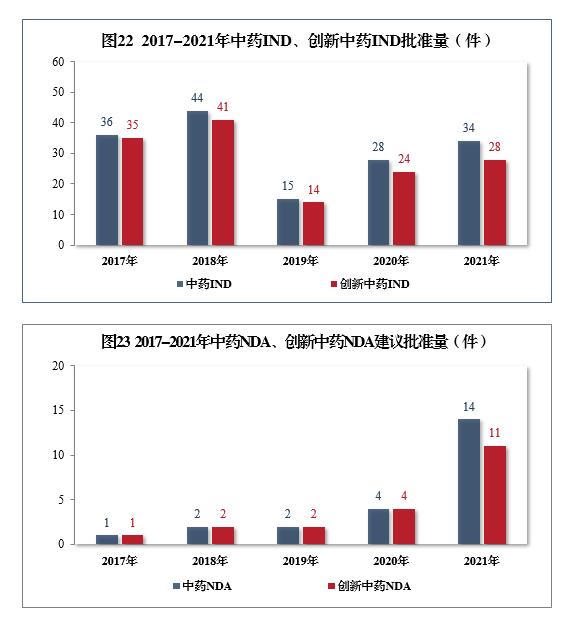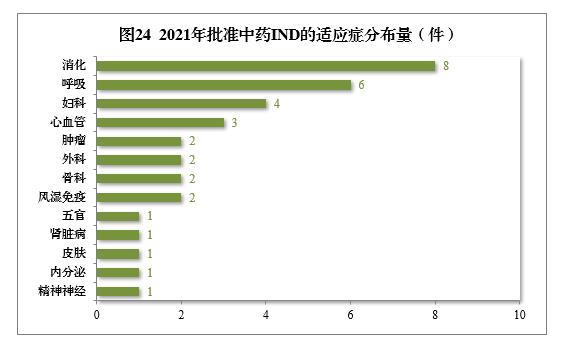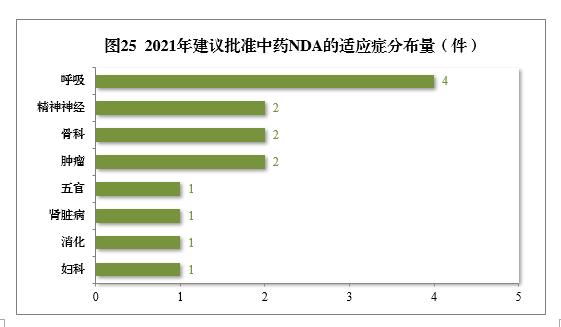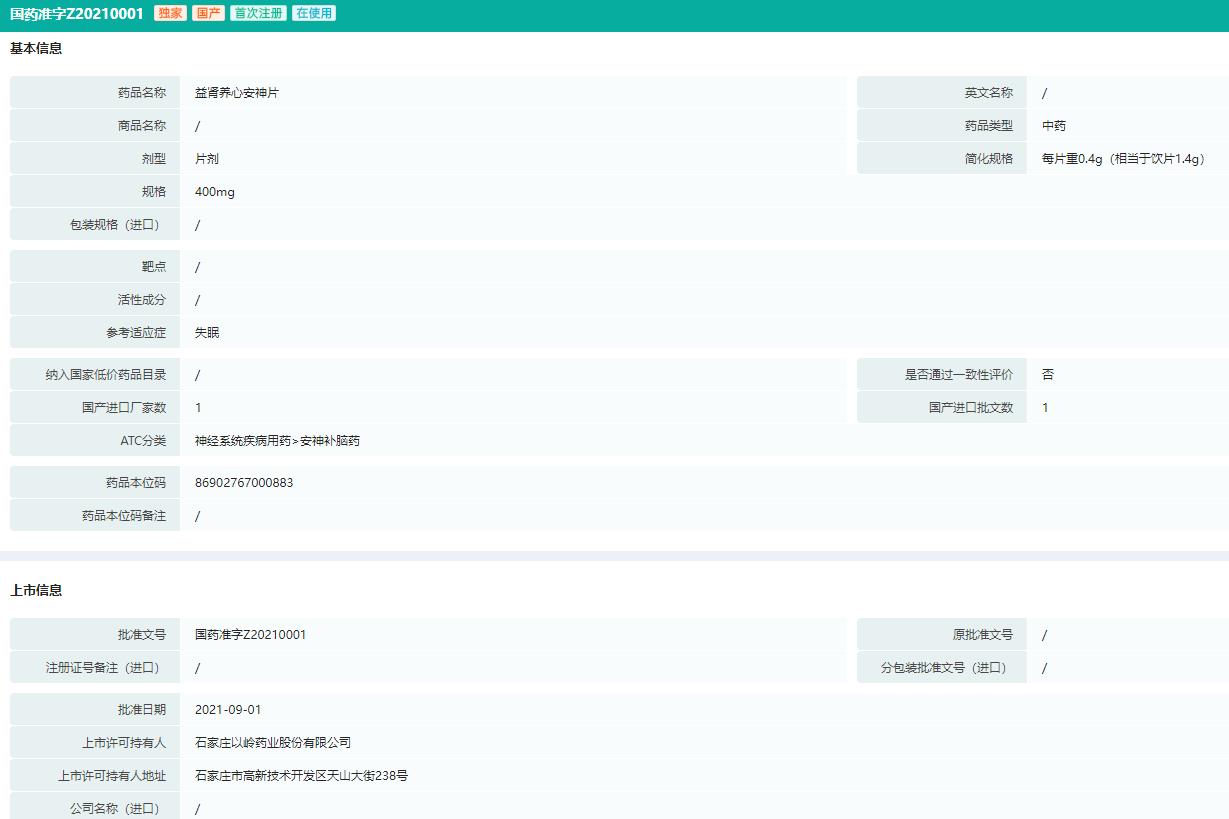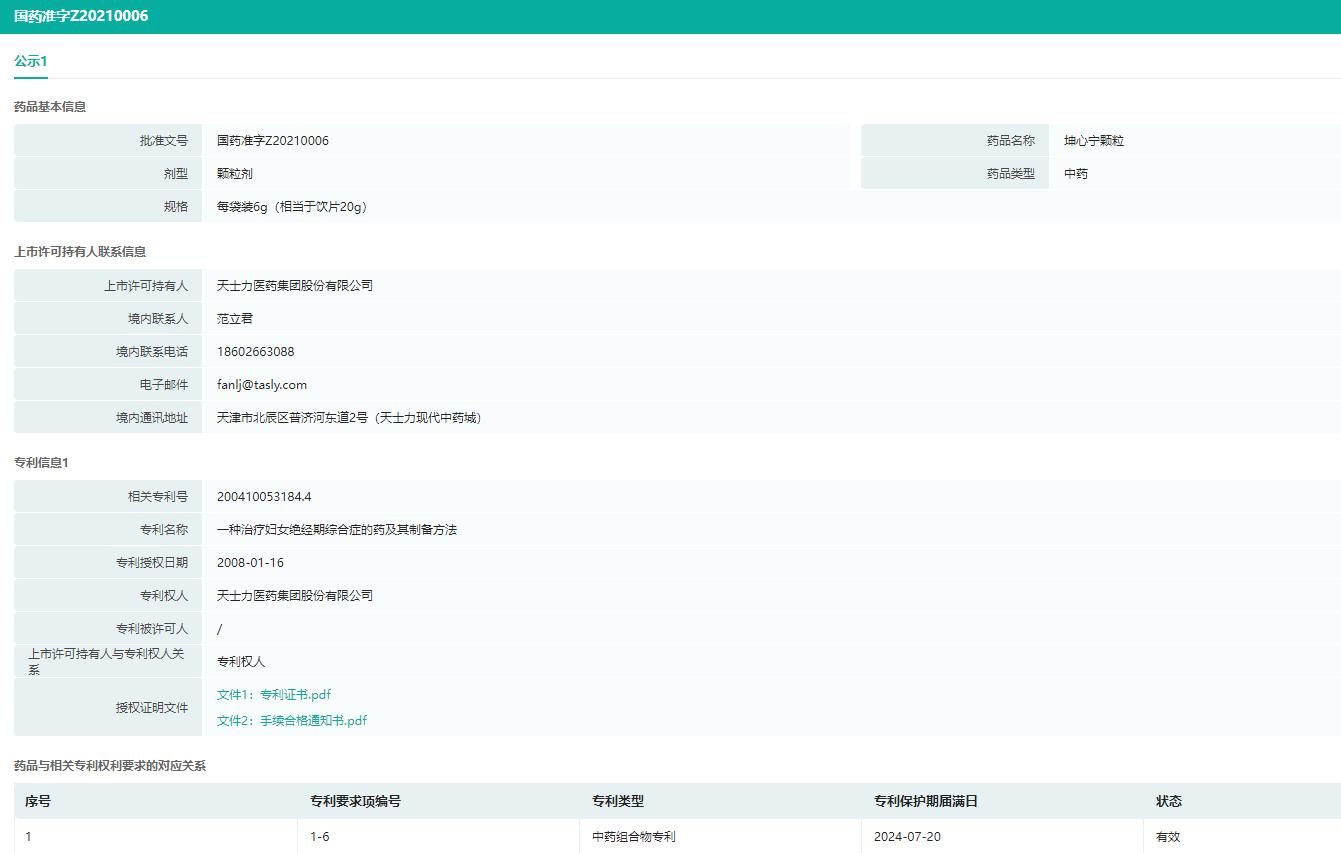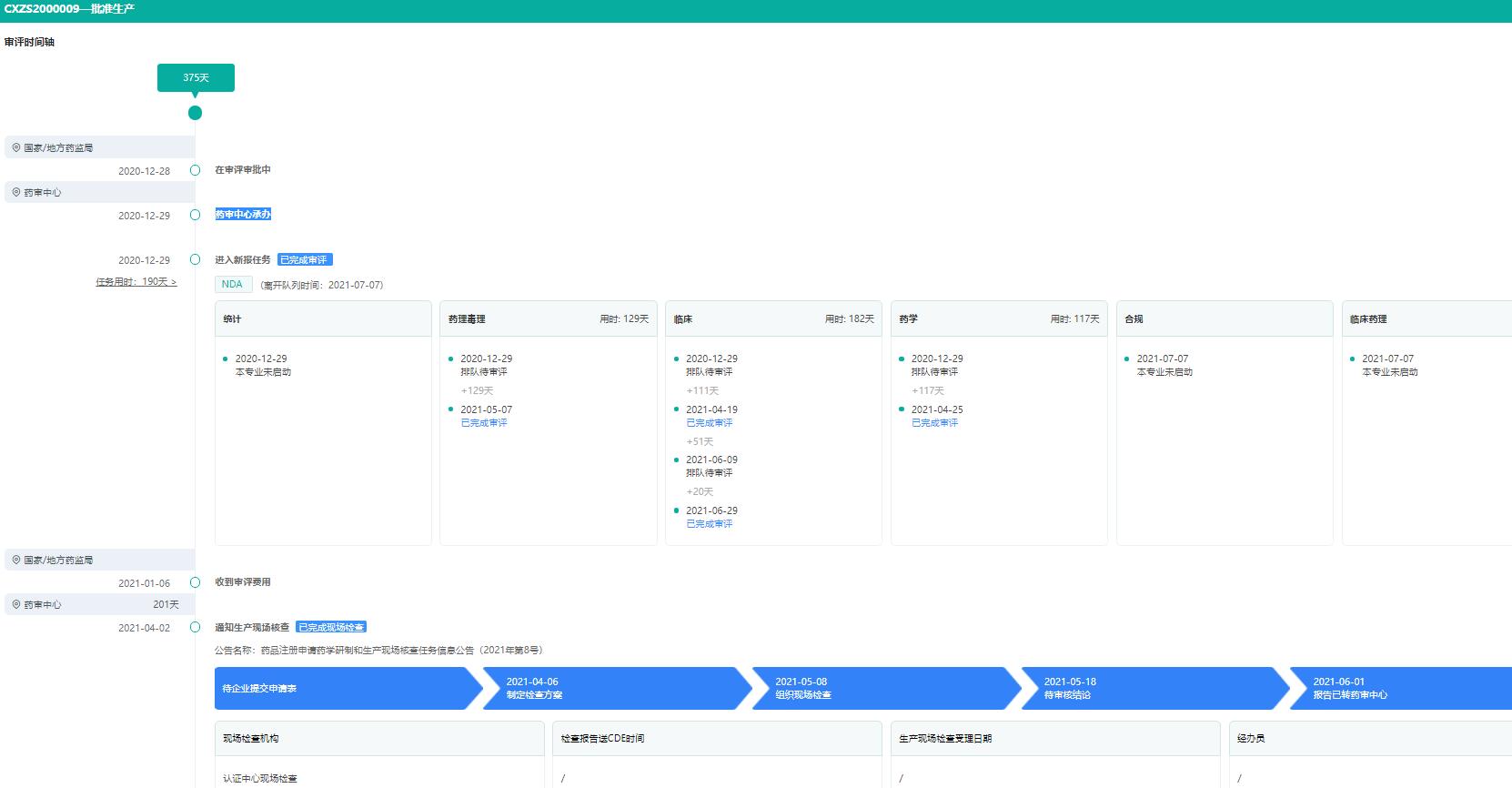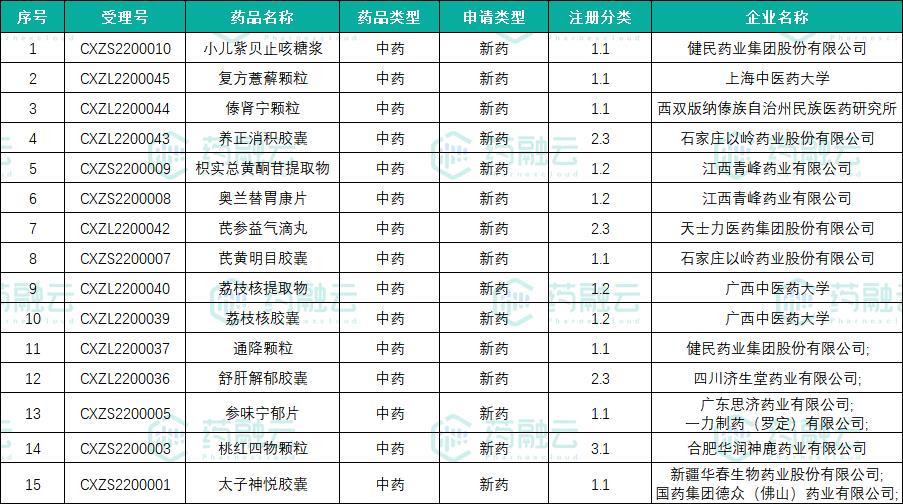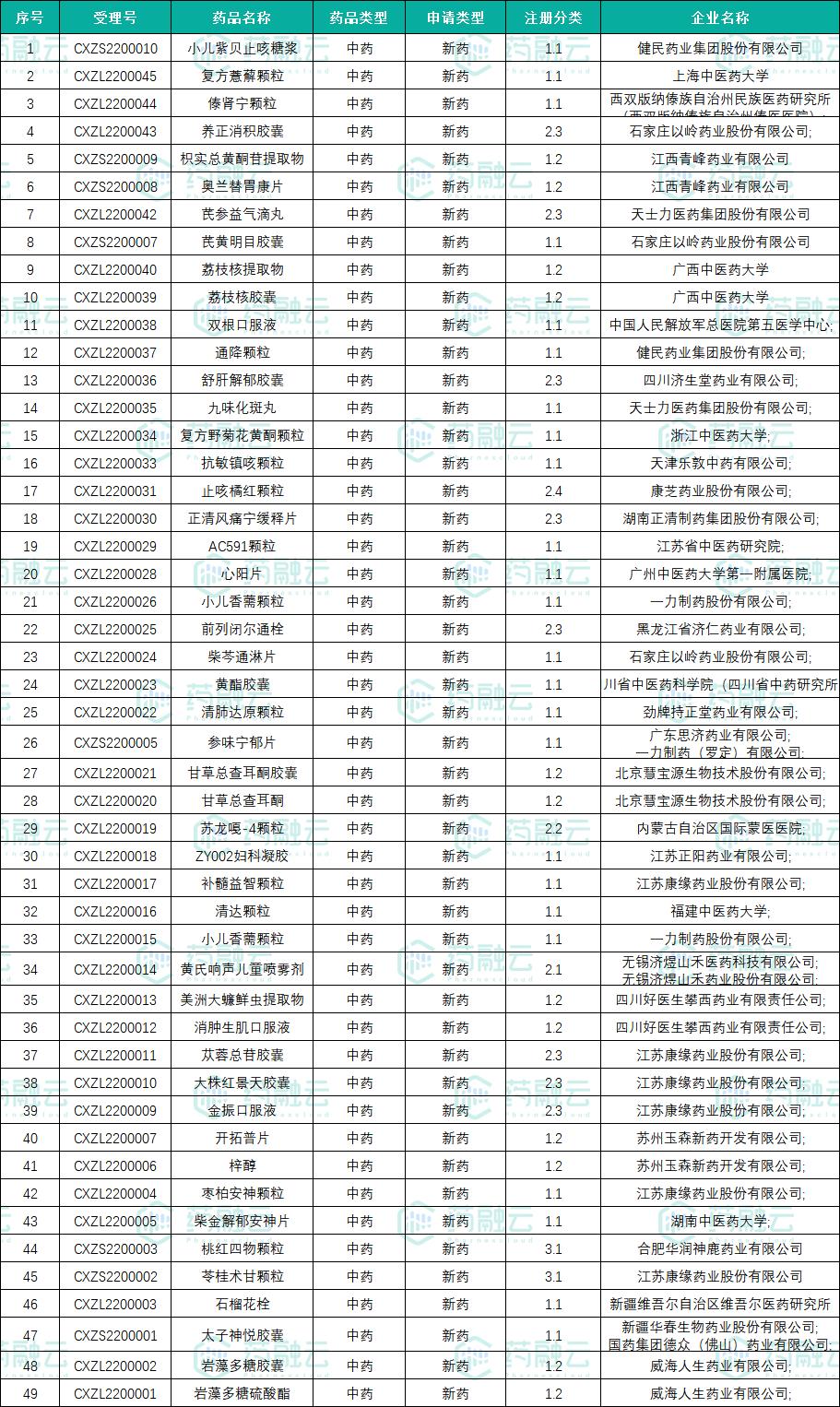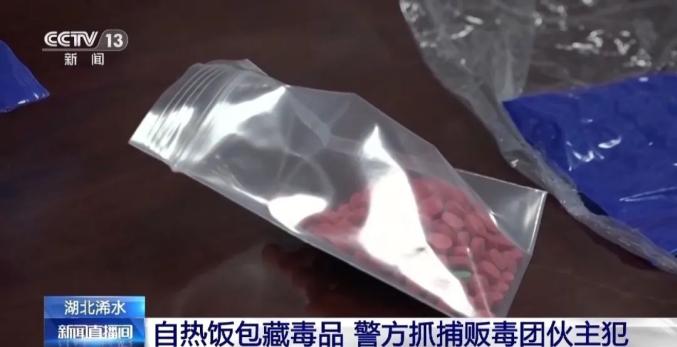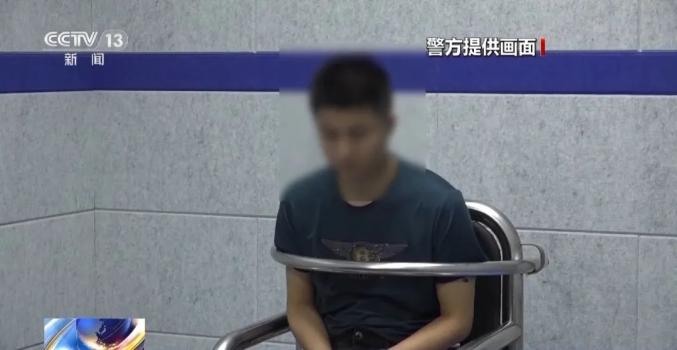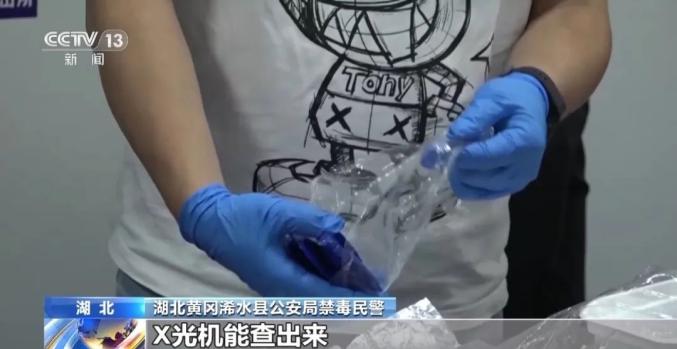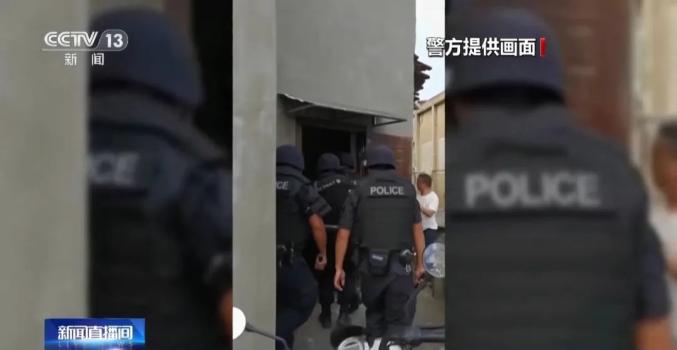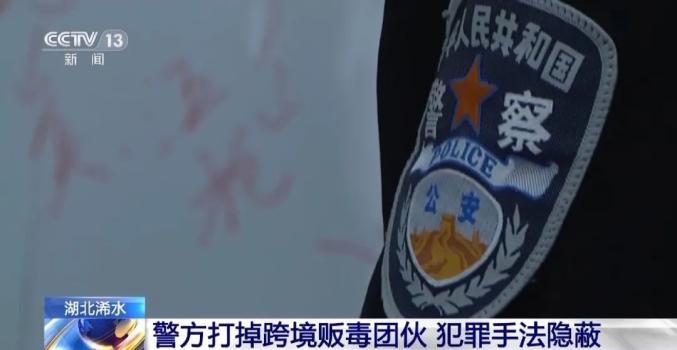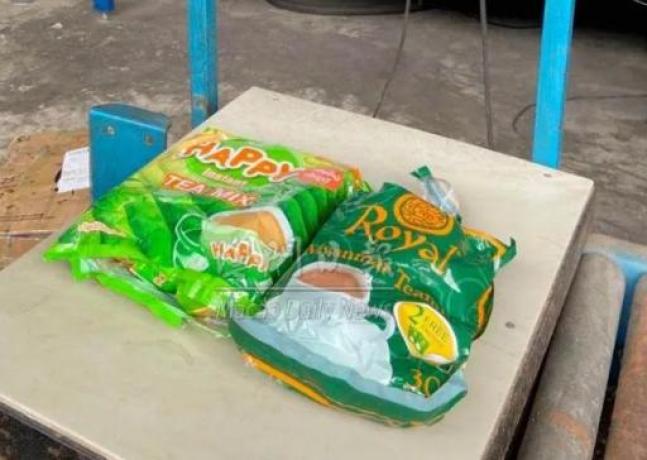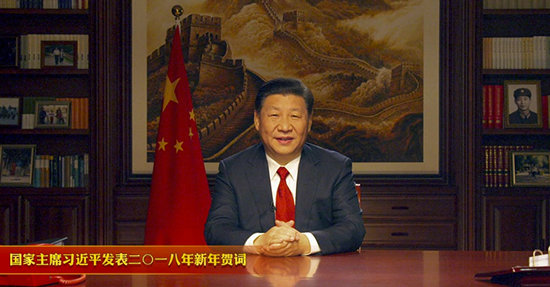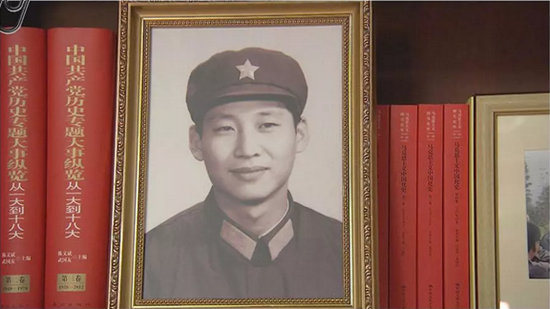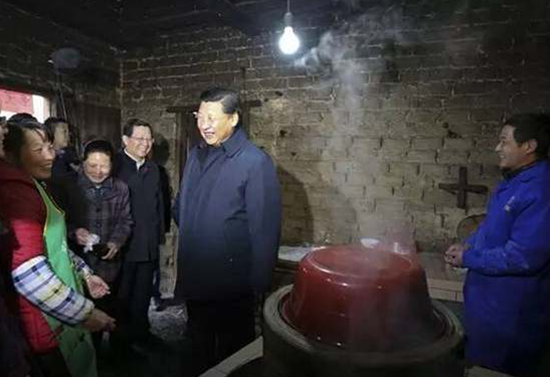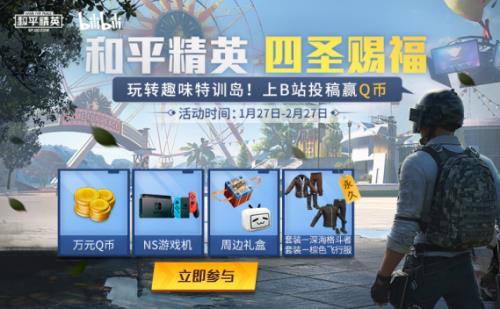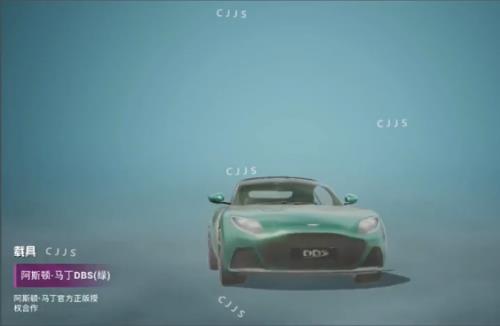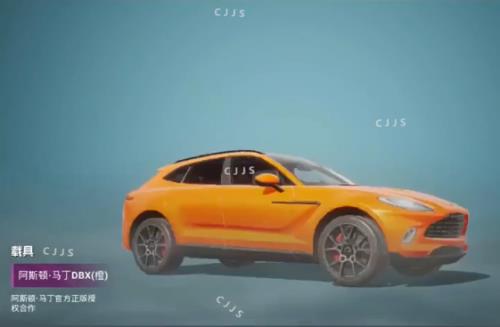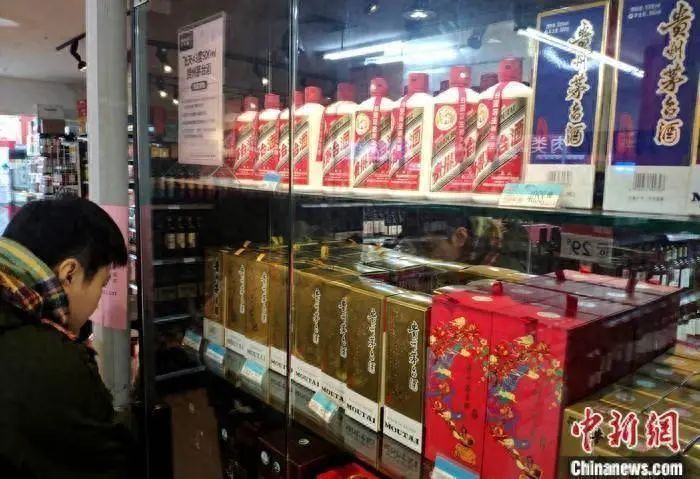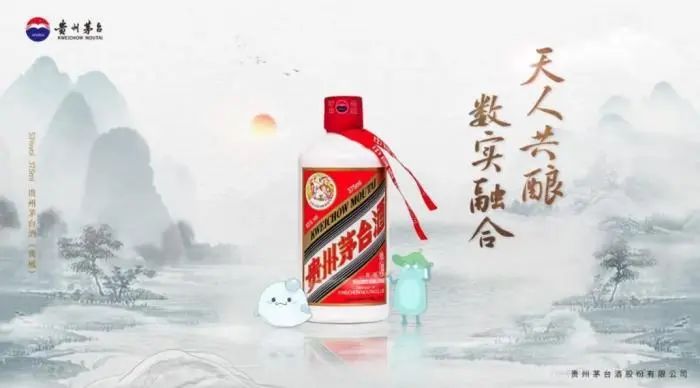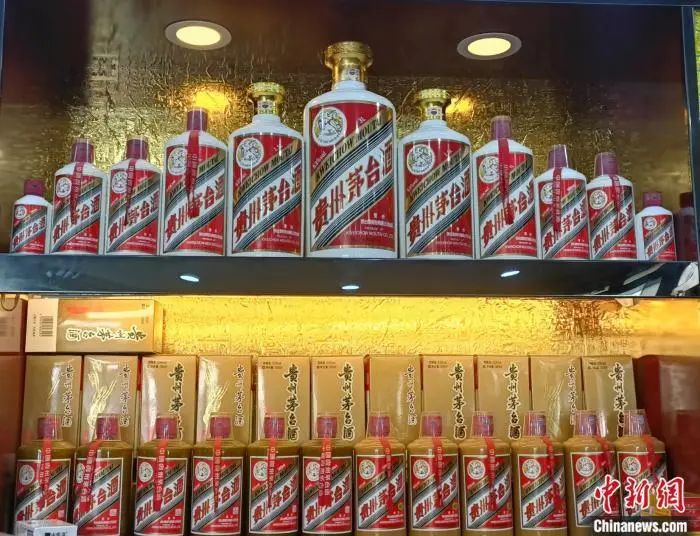This net news: The pilot action of improving the comprehensive production capacity of wheat, corn, rice and soybean officially launched by the Ministry of Agriculture will demonstrate and popularize 10 advanced and practical new technologies and 50 leading varieties of grain in 30 counties in 13 major producing provinces of the four crops.
These 10 main techniques and 50 leading varieties were determined by the Department of Science, Technology and Education of the Ministry of Agriculture and the Department of Planting Management on the basis of extensive collection of high-quality and high-yield technologies and varieties of four major grain crops in agricultural administration, scientific research, teaching and extension units across the country, following the principle of fully considering the suitable scope of the selected technologies and varieties, paying attention to the representativeness of varieties and the actual seed supply capacity, and organizing expert review and screening.
The advantages of 10 main techniques of four major grain crops in 2004, the contact information of technical supporting units, the sources, special characteristics, suitable planting areas and cultivation techniques of 50 leading varieties are now announced to the public.
List of Main Popularizing Techniques and Leading Varieties of Four Major Grain Crops in 2004
serial number |
Crop name |
Main pushing technique |
owner guide product grow |
name say/call |
quantity |
one |
paddy |
Dry cultivation and sparse planting technology of rice
rice shoot culture
Mechanized transplanting technology of rice
No-tillage cultivation techniques of rice |
Xieyou9308, Ⅱ Youming 86, Zhongxiang 1, Wuxiangjing 9, Gangyou 725, Huayougui 99, Chuanxiangyou 2, Yixiang 1577, FengYou Xiang Zhan, Fuyou 1, Yuefengzhan, Zhongxuan 181, Xiangwanxian 10 and Liaojing 371. |
14 |
2 |
wheat |
Precision and semi-precision sowing techniques of wheat
High-efficiency Cultivation Techniques of Wheat Ridge Cultivation |
Zhongyou9507, Jimai 20, Zhengmai 9023, Yannong 18, Longmai 26, Yumai 70, Han 6172, Mianyang 30, Jintai 170, Zhoumai 16, Yangfumai 2 and Chuannong 16. |
twelve |
three |
corn |
No-tillage and No-tillage Mulching Direct Seeding Technology
Cultivation techniques of low moisture corn |
Nongda108. Shendan 16, Sidan 19, Zhengdan 958, Yayu 12, Gaoyou 115, Longdan 13, Jundan 20, Ludan 981, Tongdan 24, Jidan 342, Jidan 7, Chengdan 22, Liao 613 and Pudan 6. |
15 |
four |
soybean |
Narrow row close planting technology
Cultivation techniques of ridge three |
Heinong44, Hefeng 42, Dongnong 46, Kennong 18, Changnong 13, Suinong 14, Jidou 12, Yudou 22 and Zhonghuang 20. |
nine |
total |
four |
10 |
|
50 |
The first part of the 10 main push technology
I. Rice
(A) Rice dry cultivation and sparse planting technology
Dry-raised and sparse planting technology of rice is a high-yield cultivation technology combining dry-raised seedlings with reasonable sparse planting. On the basis of introducing and absorbing Japan’s dry cultivation and sparse planting technology in cold regions, this technology has been improved and perfected according to different ecological environments, production conditions and technical levels, forming a unique dry cultivation and sparse planting technology system. Dry seedling cultivation is to cultivate rice seedlings near dry land. There is enough oxygen in the dry land soil, and water, heat and fertilizer are easy to coordinate, which is conducive to cultivating strong seedlings. Taking advantage of strong seedlings, planting density can be appropriately reduced in Honda, tillering can be used to form panicles, and scientific fertilizer and water regulation methods can be used to achieve large panicles and more grains, stable and high yield.
The main advantages of this technology are: (1) short and strong seedlings, strong root activity and good cold resistance; (2) After planting, it grows fast, tillers vigorously, the rate of ear formation is high, and the ear is big and the grain is more fruitful. (3) Early sowing, early planting and early maturity, generally 3-5 days earlier than conventional cultivation; (4) The benefits of increasing production and saving cost are good, generally about 50kg more rice than that of conventional cultivation. At the same time, 80% rice seedlings and 80% plastic film are saved, and 20-50% seeds are saved, which can also save labor, fertilizer and water.
This technology is not only suitable for popularization and application in the northern single-cropping rice area, but also suitable for popularization and application in the southern double-cropping rice area, with obvious yield increase and efficiency increase. At the same time, it is of great significance to solve the problems of low-temperature seedling rot and late emergence of stiff seedlings after planting during the seedling raising of double-cropping early rice, expand the area of late-maturing varieties, ensure early transplanting and high yield of continuous cropping late rice, and promote rice production to a new level. This technology has been widely used in various rice areas in China, with an annual application area of more than 100 million mu. This technology won the second prize of National Science and Technology Progress Award.
Technical support unit: National Agricultural Technology Extension Service Center, China Rice Research Institute.
Mailing address: No.359 Tiyuchang Road, Hangzhou, 310006.
Contact person and telephone number: Jin Qianyu, 0571-63370325
(B) Rice seedling throwing technology
Rice seedling throwing technology is a kind of rice cultivation method which uses plastic seedling tray or dry seedling bed to cultivate seedlings with nutrient clods at the roots, and uses the gravity of the seedlings with soil to evenly scatter the seedlings to the field manually or mechanically when transplanting. It is a major reform of rice cultivation technology.According to different seedling raising methods, rice seedling throwing can be divided into plastic tray seedling throwing, paper tube seedling throwing, dry seedling throwing without tray and interlayer seedling throwing, etc. At present, plastic tray seedling throwing is widely used.
Compared with traditional manual transplanting, this technology can save 0.1 mu of rice field per mu, save 2-3 workers, save about 30% of production cost, increase production by 5%-10%, and increase benefits by 15%-20%. At the same time, it can throw seedlings standing without bending over, greatly reducing labor intensity, and is conducive to centralized seedling raising in pieces, promoting large-scale operation and socialized service of rice production. Therefore, Especially in rice producing areas with developed economy and education, lack of agricultural labor and high labor price, this technology is more widely used. According to statistics, the application area of rice seedling throwing in China increased from more than 500,000 mu in 1990 to more than 100 million mu in 2000, nearly 200 times in 10 years.
In recent years, China Rice Research Institute has conducted research on rice double-season seedling throwing technology by selecting new high-quality rice varieties, and assembled and integrated a supporting technology of rice double-season high-quality rice varieties, double-season seedling throwing and double-thousand-kilo rice yield per mu, which is referred to as "rice double-excellent double-throw double-kilo technology".
Technical support unit: China Rice Research Institute.
Mailing address: No.359 Tiyuchang Road, Hangzhou, 310006.
Contact person and telephone number: Yu Shengmiao Jin Qianyu 0571-63370325
(3) Mechanized rice transplanting technology
Mechanized rice transplanting refers to a kind of mechanized rice planting technology that uses rice transplanter to transplant rice instead of manual transplanting. It can greatly improve the production efficiency and reduce the labor intensity of farmers in the field, and has important popularization and application value for China, especially the economically developed southeast coastal areas, to take the lead in realizing agricultural modernization. According to the experimental research results of our institute for many years, mechanical transplanting has good operation quality and good agronomic characters in the field, which is beneficial to high and stable yield of rice. The experimental demonstration shows that compared with manual transplanting, the yield of rice mechanical transplanting is basically the same or has a certain effect of increasing production; The disease of rice transplanted mechanically is mild and the density of insect pests is low. Compared with manual transplanting, mechanical transplanting reduces labor cost by 30-50 yuan per mu, and greatly reduces farmers’ field labor intensity. Mechanical transplanting saves labor and time, which can effectively improve agricultural production efficiency and agricultural modernization level.
Technical support unit: China Rice Research Institute.
Mailing address: No.359 Tiyuchang Road, Hangzhou.
Contact person and telephone number: Jin Qianyu, 0571-63370325
(D) No-tillage cultivation techniques of rice
No-tillage cultivation technology of rice refers to a rice cultivation technology which uses herbicides to kill weed plants and seedlings of falling grain after harvesting crops in the previous season or rice fields that have not been plowed and raked after idle, destroys rice stubble or green manure crops, irrigates and fertilizes the fields, and after the water layer naturally dries or drains, carries out direct seeding or transplanting to plant rice, and then carries out cultivation management according to the growth characteristics of no-tillage. It has changed the traditional tillage cultivation practice and directly leveled the ground.
This technology has the advantages of saving labor and cost, simplicity, improving labor productivity, easing seasonal contradictions, reducing soil erosion, protecting soil, protecting ecological balance and increasing economic benefits. According to the experimental demonstration results of China Rice Research Institute, the cost of medicine per mu in no-tillage paddy fields is about 25 yuan, which can increase production by 8%~10%, which can save costs and increase efficiency by 40-55 yuan compared with conventional paddy fields. No-tillage cultivation of rice can not only increase the yield, reduce the cost, not miss the farming season and reduce the labor intensity, but also improve the physical and chemical properties of soil, reduce soil erosion and develop sustainable agriculture, so it is popular among farmers. No-tillage cultivation has great popularization value and application prospect under the new rural situation that the comparative benefit of growing grain is low and farmers go out to work more.
Technical support unit: China Rice Research Institute.
Mailing address: No.359 Stadium Road, Hangzhou, Zhejiang, 310006
Contact person and telephone number: Jin Qianyu, 0571-63370325
Second, wheat
(1) Precision and semi-precision sowing techniques of wheat
With the improvement of production conditions and the improvement of wheat yield level, the contradiction between high yield and lodging has become increasingly prominent under the traditional cultivation conditions (big water, big fertilizer and large sowing amount), which not only affects the further improvement of wheat yield, but also makes the benefit of wheat production seriously decline. In order to solve the contradiction between high yield and lodging under medium and high yield conditions and promote the further improvement of wheat yield, the cultivation techniques of precision sowing and semi-precision sowing of wheat were studied and put forward.
① Biological basis of precision sowing and semi-precision sowing cultivation of wheat
Reduce basic seedlings and cultivate strong seedlings. Under the traditional cultivation conditions, the basic seedlings per mu are generally 200,000-300,000, and the number of seedlings is too large, and the wheat seedlings compete for water, fertilizer and glory seriously, and the quality of wheat seedlings is poor. Precision sowing and semi-precision sowing of wheat can cultivate 60,000-120,000 basic seedlings per mu (Huanghuai wheat area), and the nutritional conditions and safe living space of single wheat seedling are greatly improved, which is conducive to cultivating strong seedlings and laying the foundation for high yield.
Rely on tillering to form panicles, and increase the proportion of multi-panicle plants in the population. The population composed mainly of multi-panicle plants (tillering panicles) has high panicle yield, while the population composed mainly of one-panicle plants (main stem panicles) has low yield. Precision sowing and semi-precision sowing cultivated wheat fields have fewer basic seedlings, more panicles per plant, mainly multi-panicle plants, and higher yield.
There are many panicles per plant, large panicles and many grains, and high 1000-grain weight. In a certain range, there is a significant positive correlation between the number of panicles per plant and the average number of grains per panicle and 1000-grain weight. The wheat plants cultivated by precision sowing and semi-precision sowing are robust, with not only more panicles per plant, but also large panicles, more average grains per panicle and higher average 1000-grain weight. ② Advantages of precision sowing and semi-precision sowing cultivation of wheat.
Improve the ventilation and light transmission conditions in the field. Precision sowing and semi-precision sowing cultivation of wheat greatly reduced the number of basic seedlings per unit area, improved the ventilation and light transmission conditions in the field and reduced the humidity in the field, which not only helped to inhibit the occurrence of common diseases of wheat, but also significantly improved the lodging resistance of wheat.
It improves the photosynthetic performance of the population and is beneficial to the accumulation and distribution of dry matter. Precision sowing and semi-precision sowing cultivation of wheat not only significantly improved the photosynthetic intensity of the population in the late growth stage, but also promoted the transportation of photosynthetic products to the ear, which was beneficial to improve the economic coefficient and grain yield.
The absorption capacity of root system is enhanced, and the production efficiency of water and fertilizer is improved. Precision sowing and semi-precision sowing wheat have more secondary roots, developed roots, wide nutrient range and strong root activity, so they have strong absorption ability of fertilizer and water. In addition, precision sowing and semi-precision sowing wheat have higher economic coefficient, so the production efficiency of water and fertilizer is higher.
Technical support unit
SETTING: Agricultural College of Shandong Agricultural University
Address: No.86, Daizong Street, Tai ‘an, Shandong Province
Zip code: 271018
Contact: Yu ZhenwenTelephone:0538-8241484
(2) High-efficiency cultivation techniques of ridge cultivation of wheat
This technology is a wheat planting technology widely adopted by Mexican farmers in 1980s. It has the advantages of saving water and fertilizer, reducing the production cost by about 30% and being easy to manage, etc., and it was quickly popularized in a large area in Mexico, with the current coverage exceeding 90%.
Compared with traditional flat cultivation techniques, ridge cultivation techniques have the following characteristics:
1. The traditional flat flood irrigation was changed into furrow infiltration irrigation, which eliminated the phenomenon of soil hardening caused by flood irrigation and the soil became sticky with the increase of irrigation times, and created favorable conditions for the robust growth of wheat. Moreover, the water consumption for one irrigation was only about 30 cubic meters/mu, saving water by 30-40%.
2. Top dressing of ridge wheat is concentrated strip application in furrow, which can be done manually or mechanically. If it is done manually, each person can topdress 30 mu a day, which greatly improves the labor efficiency. The fertilizer is applied to the bottom of the ditch in a centralized way, which increases the fertilization depth (because the height of the ridge is 17-20 cm, and the fertilizer is applied to the bottom of the ditch, which is equivalent to the fertilization depth of 17-20 cm), and the fertilizer utilization rate can reach 40-50% in the current season.
3. Ridge planting is the planting method of ridge planting, and the soil surface of traditional flat planting is changed to be wavy, which increases the soil surface area by about 30%, and the light interception also increases correspondingly, which significantly improves the ventilation and light transmission conditions in the wheat canopy, increases the light transmittance by 10%-15%, reduces the field humidity by 10%-20%, and reduces the incidence of wheat powdery mildew and wheat sheath blight by 40%; The length of basal internodes of wheat was shortened by 3-5 cm, and the plant height of wheat was reduced by 5-7 cm, which significantly improved the lodging resistance of wheat.
4. Ridge cultivation has changed the field configuration of traditional flat-planting wheat, that is, it is beneficial to give full play to the lateral advantages of wheat by changing the equal row spacing to large and small rows, and the 1000-grain weight has increased by about 5% and the yield has increased by 5%-10%.
5. Ridge cultivation of wheat creates favorable conditions for interplanting corn. Planting wheat on the ridge and interplanting corn at the bottom of the ridge not only facilitates field operation, but also improves the growth conditions of corn, which is conducive to increasing the annual grain output per unit area.
Technical support unit
SETTING: Crop Research Institute of Shandong Academy of Agricultural Sciences.
Address: No.28, Sangyuan Road, Jinan, China Zip Code: 250100
Contacts: Wang Fahong and Wang Xuqing Tel: 0531-8964504, 5199925.
Third, corn
(A) less, no-tillage mulch direct seeding technology
1, technical content
No-tillage and mulching direct seeding technology is a major form of Conservation Tillage. It is a soil conservation tillage method developed abroad and popularized and perfected in China. It refers to the tillage and planting system in which the surface stubble coverage is at least 30% after one crop, and the soil erosion is controlled at about 50%. Its technical system is a set of farming technology system combining agronomy and agricultural machinery, which adopts less (no) tillage, mulching and other tillage methods, combined with the application of herbicides, to reduce the frequency of intertillage weeding, so as to reduce the disturbance and damage to the soil, increase the surface stubble, and maintain water and soil resources, so that the soil can maintain relatively high yield.
No-tillage mulch direct seeding of maize mainly includes three technical operations: (1) Water conservation and drought resistance technology of previous crop mulching: after the previous crop is harvested, a certain amount of crop stubble is reserved to cover the surface, and the coverage is aboutPer mu100-200Kilogram.A large area in Northeast China is continuous cropping of corn, which can be directly sown without tillage by staggering previous crops or by strip rotation. If the previous crop is wheat, the wheat is harvested by a 1065 combine harvester → the wheat straw is crushed by a vertical claw type wheat straw crusher, and the straws are spread at the same time, and the plots with more straws are bundled by a bundling machine to prevent the straws from piling up and blocking the no-tillage seeder; (2) No-tillage sowing technology of corn: Adjust the row spacing and sowing amount of the seeder according to the yield target, and choose a model with good selectivity. The 2BQM-6A developed by China Agricultural University has the characteristics of good stubble breaking, fine precision air-suction sowing and stable sowing quality. The small corn no-tillage seeder produced by Nonghaha has the characteristics of small size and portability, and is suitable for small-area farmers. Corn seeds under conservation tillage should be coated. The sowing amount of corn depends on the planned density. The sowing amount of silage corn harvested by green body is about 20% higher than that of corn harvested by grain, and foot fertilizer and seed fertilizer are applied when sowing. (3) Chemical weeding technology: chemical weeding should be carried out before sowing, and the herbicide should be determined according to the grass phase of weeds in the field. If the effect of weeding before sowing is not good, a herbicide harmless to corn can be sprayed after sowing, such as Yunongle.
2. Technical effect
The production of corn for conservation tillage has the following advantages in Northeast China: (1) Less no-tillage direct seeding saves farmland operation and operation cost, and the sowing date is 1-2 days earlier than that of conventional flat sowing. In case of rainy days, no-tillage will show the effect of increasing production in time; (2) The farmland-free blocks have strong water storage and moisture conservation capacity. Because the surface is covered with straw, the water, fertilizer, gas and heat of the soil can be supplied in harmony, and the soil is not easy to crack during drought and accumulate water after rain. Compared with ploughed corn, it grows faster and has a good seedling condition. In addition, the fertilizer is not easy to lose, and the yield is also improved accordingly; (3) The lodging resistance of maize is good. No-tillage corn has more surface roots and developed taproots, and the original soil structure has not been destroyed, so the corn root system has strong consolidation ability with soil, so the lodging resistance of corn is strong; (4) Returning wheat straw to field increased soil organic matter content, improved soil fertility and improved soil structure; (5) It has an obvious cost-saving and synergistic effect. Compared with ploughed plots, the non-cultivated plots of corn increase corn by 765 kg/ha, which reduces farmland operation, reduces watering once during the growth period of corn, and saves water and oil.
Technical support unit
Unit name: Conservation Tillage Research Center of Ministry of Agriculture (East Campus of China Agricultural University)
Mailing address: Box 46, East District of China Agricultural University, Tsinghua East Road, Haidian District, Beijing.
Postal code: 100083
Contact: Gao Huanwen (Professor)
Tel: 010-62337300
E-mail:ghwbgs@bjaeu.edu.cn
(B) Low-moisture corn cultivation techniques
The high moisture content of grain and the decline of product quality are also one of the important limiting factors of corn production in Northeast China-Inner Mongolia, so it is very important to produce low moisture corn, especially special corn for industrial processing. The main measures are as follows: firstly, we should choose varieties that can mature normally before frost, and in areas with insufficient heat, we should choose varieties with early maturity, high yield and high quality, and varieties with fast filling rate and rapid dehydration; Secondly, planting suitable density (generally 3000-4000 plants/mu) according to the characteristics of varieties, and properly carrying out field management to promote early maturity; The third is field precipitation technology, which can be used to remove bracts and dry them in the sun 50-55 days after spinning. Appropriate drying methods should be carried out if conditions permit; The fourth is yard precipitation, using small stations with a diameter less than 1.5 meters for precipitation.
It can obviously improve the yield of dry-farming corn, promote the early maturity of corn and reduce the water content of corn seeds during maturity, which is beneficial to improve the quality of special corn.
Technical support unit
Name of organization: Jilin Agricultural University
Mailing address: Jilin Agricultural University, No.2888 Xincheng Street, Changchun City, Jilin Province
Postal code: 130118
Contact: Wu Chunsheng (Professor, Doctor)
Tel: 0431-4531254; Mobile phone: 0431-8131587
E-mail: wcs8131587ngcau@yahoo.com.cn
Fourth, soybeans
(A) Narrow row close planting technology
Narrow row and close planting cultivation technology of soybean is a high-yield cultivation technology of narrow row and close planting of soybean, which is based on introducing, digesting and grafting foreign flat planting and narrow row and close planting technology, combined with the natural characteristics and production conditions of Heilongjiang Province. Its core is the planting technology of selecting short or semi-short varieties, reducing row spacing and increasing density, which generally increases the yield by more than 15% compared with ridge three cultivation. It includes three modes: flat planting with narrow rows, large ridge with narrow rows and small ridge with narrow rows. Under the current conditions, flat cultivation with narrow rows and close planting is suitable for areas with high mechanization level, good chemical weeding technology and less land. Close planting with large ridges and narrow rows is suitable for areas with rich heat resources, high soil fertility and meticulous cultivation management; Narrow row and close planting in small ridges is more suitable for areas with low soil fertility and cooler areas.
The technical points are as follows: firstly, dwarf and semi-dwarf lodging-resistant varieties are selected, which are suitable for narrow rows and close planting. Second, it is necessary to create a good soil plough layer condition and increase fertilizer input for narrow row and close planting. Flat cultivation with narrow rows and close planting, without shoveling during the growth period, weakens the ability of warming, drought prevention and waterlogging resistance. It requires a good soil tillage layer condition. In order to achieve deep tillage layer, flat surface and fine soil, close planting with large ridges and narrow rows is adopted. Because the number of rows on the ridges increases the difficulty of mechanical sowing, the requirements for soil preparation are more stringent than those of conventional ridge cultivation, which requires not only deep tillage layer, but also flat surface soil on the ridges. In order to achieve high yield, it is necessary to increase the input of fertilizer and apply it reasonably. The first is to increase the application of agricultural fertilizer, and the application amount of medium fertility plots is 22.5.t/haAbove all, the fertilizer should be combined with nitrogen, phosphorus and potassium, and the application amount should be increased by more than 15% compared with that of conventional ridge farming. If conditions permit, soil testing and formula fertilization should be carried out, and trace element fertilizers should be applied according to local conditions. Third, chemical weeding must be done well. Because it is difficult to work in the field during the growth period of narrow row and close planting, it is necessary to do a good job of chemical weeding before sowing or after sowing and before seedling. According to the local weed community, we should choose herbicides with good effect and little pollution, and adopt strict techniques to realize one-time thorough weeding to prevent grass shortage. The fourth is to select suitable sowing machinery for precision sowing.
The 24-row seeder or the combined seeder produced by John Deer Company can be used for flat cultivation and narrow row close planting, and the 1.4m precision seeder developed by Dongnong and driven by small four wheels can also be used. The sowing row spacing is 15-30cm.
The large ridges are densely planted in narrow rows, and the mechanical ridges are sown with equidistance precision according to rows, and the three ridges are changed into large ridges with the ridge spacing of 90-105 cm, and the seeds are sown with a four-row seeder on the ridge produced by Hailun Agricultural Machinery Repair Factory, etc. For the big ridge with the ridge spacing of 120-140 cm from two ridges to one ridge, six rows were sown on the ridge with Huafeng 2B KM-IB special seeder for big ridge and narrow row in Huachuan.
(B) Ridge three cultivation techniques
This technology is a comprehensive high-yield cultivation technology of soybean with three technologies as the core: subsoiling, deep fertilization and precision sowing. Based on the success of popularizing soybean precision sowing in Heilongjiang Province, this new technology is a comprehensive high-yield cultivation technology of soybean, which combines the successful experience of popularizing subsoiling tillage in the 1970s with the practice of subsoiling soil with the "three ridges" tillage and sowing machine developed by "August 1st" Agricultural Reclamation University. It is mainly suitable for popularization in most soybean producing areas in Heilongjiang and Inner Mongolia, and generally increases the yield by more than 20% compared with conventional cultivation.
The mechanism of increasing yield is as follows: firstly, subsoiling can break the plough bottom, deepen the plough layer and improve the structure of the plough layer, which is beneficial to the growth and development of soybean root system and the formation of nodules. Subsoiling creates a soil structure that is virtual and real, and enhances the ability of soil to store water and conserve moisture and prevent drought and waterlogging. Subsoiling can also release cold and increase temperature, loosen soil and promote early growth and rapid development of soybeans; Second, the deep application of chemical fertilizer overcomes the phenomenon of burning seeds and seedlings in the same place, and at the same time can reduce the volatilization and loss of chemical fertilizer and improve the utilization rate of chemical fertilizer; Thirdly, on the basis of reasonable and close planting, the implementation of precision sowing can achieve even distribution of plants, solve the problems of uneven thickness and lack of seedlings in soybean production in the past, improve the growth environment of soybean plants, make the population structure more reasonable, and better coordinate the contradiction between light, heat, water and fertilizer.
Main technical points: First, subsoil the soil. The depth of subsoiling shall be subject to breaking the plow bottom, and generally the depth of subsoiling is 25-30cm. According to the different parts of subsoiling, it can be divided into ridge subsoiling, furrow subsoiling and omni-directional subsoiling. Deep loosening of ridges is also called deep loosening at the bottom of ridges. There are two methods: one is deep loosening of soil preparation, which is also called deep loosening and ridging. This method is combined with soil preparation, such as deep loosening of wheat stubble and deep loosening and ridging on the basis of ploughing or harrowing stubble. Another kind of subsoiling of ridges is subsoiling sowing. A large-scale "three-ridge" cultivator is used to subsoil the ridges, and at the same time, deep fertilization and precise sowing are carried out. This method is completed by three techniques at one time. Deep loosening of furrows means deep loosening of furrows with a deep loosening shovel. According to different periods, it can be divided into furrow subsoiling after sowing and before emergence, furrow subsoiling at seedling stage, etc., or furrow subsoiling can be carried out at the same time by using a small furrow cultivator. Omni-directional subsoiling refers to subsoiling the whole tillage layer with an omni-directional subsoiler, which can ensure that the soil layer is not chaotic and deepen the tillage layer, and the subsoiling depth can reach more than 50cm. The second is deep fertilization in layers, with chemical fertilizer as seed fertilizer, and the fertilization depth should reach 5-6 cm below the seed; Chemical fertilizer is used as base fertilizer, and the fertilization depth should reach 10-15cm. At present, the small precision seeders produced by agricultural machinery factories in Huachuan, Mingshui, Dedu and other counties (cities) can achieve deep fertilization; The large-scale "three ridges" tillage seeder produced by Yilan and Helen can not only achieve deep fertilization, but also achieve simultaneous application of seed fertilizer and base fertilizer, that is, layered fertilization. The third is precision sowing.At present, except in places with sufficient labor force, farmers also use artificial precision sowing methods such as artificial piercing and artificial seed placement, and most places have adopted mechanical precision sowing. Mechanical precision sowing can achieve continuous operations of ditching, sowing seeds, fertilizing, covering soil and suppressing, which not only speeds up the sowing progress, shortens the sowing period, but also ensures the sowing quality. To use mechanical precision sowing, first of all, we should do a good job in mechanical maintenance, especially the seed metering, fertilizer discharging and ditching and soil covering devices should meet the standards to reach the state of sowing operation; Second, do a good job in seed selection and germination test; The third is to do a good job in seed dressing or seed coating. When sowing, mechanical double-row equidistant precision sowing is carried out on the ridge, and the small row spacing between the two rows is 10-12 cm; Use a hole seeder to sow holes on the ridge at equal intervals, with the hole spacing of 18-20 cm and 3-4 plants per hole. It is necessary to appropriately increase the sowing amount and ensure that there are enough seedlings per unit area, with 200,000-300,000 plants per hectare in the central and southern regions and 280,000-350,000 plants per hectare in the northern region. In addition, we should also pay attention to selecting suitable varieties, carefully preparing soil, strengthening field management, and doing a good job in the prevention and control of diseases, pests and weeds.
The second part of the 50 leading varieties
I. Rice
(1)Xieyou9308
1. Variety source: Xieqingzao A/9308, approved by Zhejiang Variety Approval Committee in 1999.
2. Special characteristics of varieties: three-line hybrid mid-season rice combination with late maturity, compact plant type, moderately weak tillers, stout stems, fertilizer tolerance and lodging resistance, Jian Ye Ting, yellow maturity of late green stalks, good color change, large panicle and many grains, and 1000-grain weight of 28g. The rice quality is good, the brown rice rate is 81.8%, the milled rice rate is 75.7%, the head milled rice rate is 62.8%, the aspect ratio is 2.6, the chalkiness rate is 82%, the chalkiness degree is over 3.9%, the transparency is grade 3, the gelatinization temperature is grade 5.2, the gel consistency is 44 mm, the amylose content is 21.6%, the protein content is 9.4%, and the taste is good. High and stable yield, generally 500-550 kg per mu, with a maximum yield of 700 kg per mu. It is resistant to bacterial blight and moderately resistant to ear neck blast, but it is vulnerable to stem borers and has strong lodging resistance, but its plants are on the high side, with large roots, deep distribution and strong vitality, but its fertilizer tolerance is medium.
3. Variety adaptability and suitable planting area: This combination has certain photosensitivity, similar to early-maturing and late-maturing indica rice, and is suitable for planting single-season rice in Zhejiang, Anhui, Jiangxi, Hunan, Fujian and other provinces.
4. Key points of cultivation techniques: A Sowing at the right time, sowing too late and shortening the growth period will make the panicle type smaller. B, the strong seedlings were cultivated with sparse sowing of paclobutrazol, and the strong seedlings were cultivated with nitrogen, phosphorus, potassium and paclobutrazol. The seedling age is controlled in 25 ~ 30 days. C appropriately increase the degree of close planting at about 13,000 clumps per mu. In addition, it is required to transplant in sunny afternoon and warm cloudy or rainy day to reduce seedling failure. D properly control the application of nitrogen fertilizer, and pay attention to the intermittent irrigation after the field is put aside. E focus on the prevention and control of stem borers and sheath blight, and do a good job in ensuring production at the ear stage. F timely harvest, not only to avoid green cutting, but also to prevent over-ripening and lodging, so special emphasis is placed on harvesting when 90% of the grain is yellow and ripe.
5. Breeding (Introduction) Unit: China Rice Research Institute.
(2)ⅡYouming86
Variety source: This variety was bred by Sanming Institute of Agricultural Sciences.Characteristics: This combination is a new combination of late indica hybrid rice, which is used for the whole growth period of late rice.120Days, better than the control.63Late ripening2Days or so, plant height100-110Cm, moderately distributed plant types, stout stems and erect flag leaves. Average number of grains per spike134Seed setting rate83%-90%; thousand-grain weight27g-28g, resistant to fertilizer and lodging, good color change in the later stage and wide adaptability. Rice quality was tested, brown rice rate81.2%, milled rice rate74.0%, head milled rice rate70.0%, grain length6.3Millimeter, aspect ratio2.4Chalkiness rate32%, chalkiness9.0%, transparency2Grade and alkali nitrate value6.2Grade and gel consistency37Millimeter and amylose content23.4%, protein content8.8%。 The identification result of rice blast resistance is moderate resistance to rice blast.Output performance:1999Participated in the province’s late indica rice late maturity in.AGroup regional test, average yield404.8Kilogram/667Square meters, compared with the controloneShanyou63increase the production4.22%, compared with the control2Shanyougui32increase the production11.97%, all reached extremely significant.Key points of cultivation: sparse sowing to raise strong seedlings, and the seedling age should be controlled at35Within days; Cluster insertion2Ben; Insert the tube early, apply sufficient base fertilizer, apply tiller fertilizer early, and give consideration to ear fertilizer. Summer time, parents’ time difference16Days or so, the leaves are poor3.0Leaves; Strictly remove impurities to ensure seed purity.Suitable area: This combination is suitable for middle and late rice planting in Fujian Province.
(3) Zhongxiangonenumber
Variety source: This variety is a new high-quality rice variety bred by China Rice Research Institute.
Yield performance: this variety2000County planting area in1500Average yield per mu342-404.8Kg, which is a late-growing variety than our county at present.“Xieyou46”reduce output10%About.
Characteristics: the whole growth period120Days or so, than“Xieyou46”shortsevenGod. plant height95-100Cm, compact plant type, stiff flag leaf, medium tillering ability, high panicle rate and good late maturity. Generally speaking, the number of spikes in production is less, but the spike type is larger, with total grains per spike.120-130Grain, seed setting rate in85%Above, 1000-grain weight29-thirtyDick. It is moderately resistant to rice blast and bacterial blight. Moderate fertilizer tolerance, not as good as“Xieyou46”.
Key points of cultivation:A.Sow thinly at suitable time to raise strong seedlings. The sowing date of continuous late planting is insixmoon18Day-twentyDaily, seed consumption per mu2-2.5Kilogram.B.Reasonable close planting. Muluo field seedling10More than ten thousand.C.Balanced fertilization, suitable nitrogen and increased phosphorus and potassium. Applying compound fertilizer to base fertilizer mu40-50Kg, applying urea to seedling fertilizer mu.eight-10Kilogram.D.Pay attention to the prevention and control of pests and diseases.
Suitable area: This variety is suitable for planting in middle and upper fertility conditions along the Yangtze River and Taihu Lake.
(4) Wuxiangjingninenumber
Output performance:Whole growth period160.5sky,Competition and cultivation of japonica ricethreeNumber lengthfiveDays or so.1995Average annual yield per mu602.2kilogram,Competition and cultivation of japonica rice2No.1 increase production3.34%,Competition and cultivation of japonica ricethreeNo.1 increase production7.3%.1996Average yield per mu in provincial trial in.637.76kilogram,Competition and cultivation of japonica rice2No.1 increase production4.56%,1996Average yield per mu of trial planting in Nanjing in590.65Kilogram.
Characteristics: This variety has good high and stable yield.,Strong fertilizer tolerance and lodging resistance,plant height90.5centimetre,Strong tillering rate,The panicle forming rate is higher.,Effective panicle per mu27.2ten thousand,The spike type is larger.,Total grains per panicle106.9grain,Real grain number92.65grain,thousand-grain weight25.47scold or beat,The rice quality is excellent.,Bai Xiao, confidant,Rice blast resistance is better than Wuyujing.2number,Sheath blight is moderate.Key points of cultivation: timely sowing,Single cropping in Nanjing area,commonfiveSow in the middle of the month; Plant spacing is4×8very little/a surname,Mu planting2.0Wanxue,Mu basic seedlingeightAbout 10,000; Pay attention to fertilizer and water operation, promote both maintenance and protection,Moderate amount of nitrogen fertilizer,It is necessary to increase the application amount of high-efficiency compound fertilizer,In the late growth stage, mixed spraying of drugs and fertilizers is achieved; During the whole growth period, it is required to apply pure nitrogen per mu.17.5More than one kilogram,600High-yield fields above kg require fertilization level to reach.18-twentyKilogram of pure nitrogen; Increase the application of phosphorus and potassium fertilizer. When the total tillers reach the predetermined number of spikes,Put the field lightly in stages,Prevent premature water cut-off in the later period.,Affect seed setting rate and 1000-grain weight; insect disease prevention,Besides controlling sheath blight, rice planthopper and leaf roller,Attention should also be paid to the prevention and treatment of false smut in the later stage.
(5)Gangyou725
Variety sourceThis variety was bred by Mianyang Institute of Agricultural Sciences, Sichuan Province.1998Approved by Sichuan Crop Variety Approval Committee in,2000Approved by Guizhou Crop Variety Approval Committee in.
Characteristic characteristics:This variety belongs to three-line hybrid rice with late maturity in mid-season indica rice. Whole growth period and Shanyou63Quite, high yield, wide adaptability and susceptibility to rice blast.
Suitable area:This variety is suitable for Pingba, hilly area in Sichuan and elevation in Guizhou Province.1100Planting mid-season rice in areas below meters.
(6) Hua Yougui99
Variety sourceThis variety was bred by tengxian Seed Company of Guangxi Autonomous Region, Agriculture Department of South China Agricultural University and Raoping Seed Company of Guangdong Province.2000Approved by Guangxi Autonomous Region Crop Variety Approval Committee in,2001Approved by Guangdong Crop Variety Approval Committee in.Characteristic characteristics:This variety belongs to temperature-sensitive late-maturing three-line hybrid rice combination, which is planted in the whole growth period of early rice in Guangdong and Guangxi.126-131Day, planting late rice.115Days or so. The stems are soft, the lodging resistance is poor, and the rice quality is excellent.
Suitable area:This variety is suitable for early and late rice planting in areas outside northern Guangdong Province, early and late rice planting in central and southern Guangxi, and late rice planting in northern Guangxi.
(7)Chuanxiangyou2number
Variety source: This variety was bred by Sichuan Academy of Agricultural Sciences.
Characteristics: the whole growth period is 151 days, which is 2-3 days longer than Shanyou 63; The seedling stage grows vigorously, the plant type is good, and it is resistant to rice blast; The plant height is 110 cm, the tillering is middle and upper, and the panicle formation rate is high. The effective panicle per mu is 180,000, and the barnacle tip is purple, with 170-180 grains per panicle, the seed setting rate is about 82%, and the 1000-grain weight is about 30 grams. All indicators of rice quality have reached the first-class or second-class yomi standards issued by the Ministry, and it has Thai rice flavor. Yield performance: in 1996-1997, the average yield of high-quality rice group in provincial trial was 526.5 kg, which was 2.9% higher than that of the control Shanyou 63. In 1998, the average yield per mu was 600 kg, which was 2.63% higher than that of the control.
Cultivation points: improve seedling raising. First, popularize dry seedling raising technology in winter paddy fields, reduce the influence of early low temperature on seedling quality, and achieve early breeding and early planting; The second is to popularize wet seedling raising technology in two-season fields, make full use of tillers in rice fields to cultivate multi-tillers and strong seedlings, and plant them in time. Timely sowing and planting, reasonable close planting. In order to avoid the harm of summer drought to rice, the winter paddy field is about 8 days ahead of the two-season paddy field. Balanced formula fertilization. Generally, 1,000 kilograms of high-quality farmyard manure or about 20 tons of human and livestock manure, 20 kilograms of oil waste, 20-25 kilograms of urea, 40-50 kilograms of calcium superphosphate and 1.5-2 kilograms of zinc fertilizer are applied per mu. Scientific water use. The practice of "planting seedlings in shallow water, tillering in thin water, differentiation in shallow water, heading and flowering in deep water, and strengthening seeds by wet and dry" is implemented, so as to adjust air and fertilizer with water. Integrated pest control. Popularize the use of high-efficiency, low-toxicity, low-residue pesticides and pollution-free biological pesticides, and implement the comprehensive prevention and control technology of "transplanting with drugs, strengthening prediction, controlling seedling blast, treating leaf blast and treating neck blast" for rice blast. Suitable areas: Shanyou 63 can be planted in all areas where it is planted.
(8) Appropriate fragrance1577
Variety approval number:National audit rice 2003052
Breeding unit:Sichuan province Yibin agricultural science institute
Variety source:Yixiang 1A× Yihui 1577
Provincial examination and approval:Approved by Anhui Crop Variety Approval Committee in 2002 and Sichuan, Zhejiang, Guizhou, Yunnan and Shaanxi Crop Variety Approval Committees in 2003.
Characteristic characteristics:This variety belongs to indica three-line hybrid rice, which is planted as mid-season rice in the upper reaches of the Yangtze River, with an average growth period of 155.1 days, 1.7 days later than that of the control Shanyou 63, and 137.5 days later than that of the control Shanyou 63 in the middle and lower reaches. The plant height is 114.6 cm, the leaf shape is good, the leaf posture is straight, the tillering ability is weak, the panicle rate is high, the panicle type is large, and the color change is good in the later stage. The number of effective panicles per mu is 175,000, the panicle length is 25.2 cm, the total number of grains per panicle is 160.4, the seed setting rate is 81.7%, and the 1000-grain weight is 26.4 grams. Resistance: leaf blast 8, ear blast 7, ear blast loss rate 25.1%; Xanthomonas oryzae PV. 5, Nilaparvata lugens 9. Main indicators of rice quality: Head milled rice rate is 58.7%, aspect ratio is 2.65, chalky rice rate is 33.8%, chalkiness degree is 5.5%, gel consistency is 63mm, and amylose content is 22.2%.
Output performance:In 2001, he participated in the regional trials of late-maturing high-quality mid-season indica rice groups in the upper reaches of the Yangtze River and late-maturing high-quality mid-season indica rice groups in the middle and lower reaches of the Yangtze River. The average yield per mu in the upper reaches was 586.1 kg, which was 0.59% higher than that in the control Shanyou 63 (not significant), and the average yield per mu in the middle and lower reaches was 623.3 kg, which was 2.74% higher than that in the control Shanyou 63 (extremely significant). In 2002, the average yield per mu in the upper reaches was 560.9 kg, which was 3.62% higher than that in the control Shanyou 63 (extremely significant), and the average yield per mu in the middle and lower reaches was 556.3 kg, which was 1.16% higher than that in the control Shanyou 63 (insignificant). In 2002, the average yield per mu was 590.6 kg, which was 6.32% higher than that of Shanyou 63.
Key points of cultivation techniques:1. Timely sowing: the sowing date is the same as Shanyou 63, the sowing amount per mu is 8-10 kg, and the seedling age is 30-35 days; 2. Reasonable close planting: planting 12,000 ~ 15,000 holes per mu in the upper reaches of the Yangtze River, planting 15,000 ~ 18,000 holes per mu in the middle and lower reaches of the Yangtze River, and planting 2 rice seedlings per hole; 3. Scientific fertilizer application: applying sufficient base fertilizer, topdressing early, and applying nitrogen, phosphorus and potassium together; 4. Prevention and control of pests and diseases: Pay attention to the prevention and control of rice blast, bacterial blight and rice planthopper.
Examination and approval opinions of the National Quality Examination Committee:After examination, the variety meets the national rice variety approval standard and has passed the approval. This variety is susceptible to rice blast, moderately susceptible to bacterial blight and highly susceptible to brown planthopper. The processing quality and cooking quality are good, fragrant, and the appearance quality is above average. It is suitable for planting one-season mid-season rice in the Yangtze River valley of Sichuan, Hubei, Hunan, Jiangxi, Fujian, Anhui, Zhejiang and Jiangsu provinces, and in the middle and low altitude rice areas of Chongqing, Yunnan and Guizhou provinces (except Wuling Mountain area), as well as Hanzhong in Shaanxi Province and Xinyang in Henan Province.
(9)Feng You Xiang Zhan
Variety approval number:National audit rice 2003056
Breeding unit:Jiangsu Lixiahe Agricultural Science Research Institute, Guangdong Academy of Agricultural Sciences Rice Research Institute.
Variety source:Yuefeng A×R6547
Provincial examination and approval:Approved by Jiangsu Crop Variety Approval Committee in 2002
Characteristic characteristics:This variety belongs to indica three-line hybrid rice, planted as mid-season rice in the middle and lower reaches of the Yangtze River, with an average growth period of 136.5 days, which is 1.1 days later than that of Shanyou 63. The plant height is 122.5 cm, the plant type is moderate, the population is neat, the leaves are light green, the leaves are drooping, the tillering ability is weak, and the color changes well at maturity. The number of effective panicles per mu is 157,000, the panicle length is 23.7 cm, the total number of grains per panicle is 164.8, the seed setting rate is 82.5%, and the 1000-grain weight is 27.7 grams. Resistance: leaf blast 9, ear blast 9, ear blast loss rate 59.3%, bacterial blight 7 and brown planthopper 9. Main indicators of rice quality: Head milled rice rate is 47.1%, aspect ratio is 3.4, chalky rice rate is 16.5%, chalkiness degree is 2%, gel consistency is 80mm, and amylose content is 14.5%.
Output performance:In 2001, he participated in the regional test of late-maturing and high-quality mid-season indica rice in the middle and lower reaches of the Yangtze River, with an average yield of 599.5 kg per mu, which was 1.17% lower than that of Shanyou 63 (not significant); In 2002, the average yield per mu was 540.0 kg, which was 1.81% lower than that of the control Shanyou 63 (not significant). In 2002, the average yield per mu was 570.2 kg, which was 2.66% higher than that of Shanyou 63.
Key points of cultivation techniques:1. Sowing in time: Sowing is usually carried out from mid-April to early May, and the seedling age is 30-40 days; 2. Reasonable close planting: the planting size is 27 ~ 30× 13 cm, with 15 ~ 17,000 holes per mu and 1 ~ 2 rice seedlings per hole; 3. Fertilizer and water management: 13 ~ 15 kilograms of pure nitrogen, 3.5 ~ 4.0 kilograms of phosphorus and 7 ~ 8 kilograms of potassium are applied per mu. Water slurry management should be carried out in shallow water frequently, when the number of tillers per mu reaches 150,000 ~ 180,000, the fields will be dehydrated and dried, and the flowers will be dry, wet and dry at the filling stage, and the roots will be raised and the leaves will be protected, and they will be alive and ripe until they are old; 4. Prevention and control of pests and diseases: pay attention to the prevention and control of pests and diseases such as rice blast, bacterial blight and rice planthopper.
Examination and approval opinions of the National Quality Examination Committee:After examination, the variety meets the national rice variety approval standard and has passed the approval. This variety is highly susceptible to rice blast, bacterial blight and brown planthopper. Excellent appearance quality, medium processing quality and cooking quality. It is suitable to be planted as one-season mid-season rice in the Yangtze River valley of Jiangxi, Fujian, Hubei, Hunan, Anhui, Zhejiang and Jiangsu provinces (except Wuling Mountain area) and the rice blast-prone area in Xinyang area of Henan Province.
(10)Fuyouonenumber
Variety approval number:National audit rice 2003048
Breeding unit:Southwest Agricultural University
Variety source:II-32A×21
Provincial examination and approval:Approved by Chongqing Crop Variety Approval Committee in 2002
Characteristic characteristics:This variety belongs to indica three-line hybrid rice. The average growth period of mid-season rice planted in the upper reaches of the Yangtze River is 158 days, which is 4.7 days later than that of the control Shanyou 63. The plant height is 111.3 cm, the panicle has dense grains, strong cold tolerance and good color change at maturity. The number of effective panicles per mu is 175,000, the panicle length is 23.5 cm, the total number of grains per panicle is 163.3, the seed setting rate is 82.6%, and the 1000-grain weight is 27.4 grams. Resistance: leaf blast 7, ear blast 7, ear blast loss rate 10.6%, bacterial blight 5, brown planthopper 5. Main indicators of rice quality: Head milled rice rate is 60.9%, aspect ratio is 2.2, chalky rice rate is 58%, chalkiness degree is 9.6%, gel consistency is 49 mm, and amylose content is 25.2%.
Output performance:In 2001, he participated in the regional test of late maturity and high yield group of medium indica rice in the upper reaches of the Yangtze River, with an average yield of 612.6 kg per mu, which was 4.79% higher than that of the control Shanyou 63 (extremely significant); In 2002, the average yield per mu was 597.0 kg, which was 9.28% higher than that of the control Shanyou 63 (extremely significant). In 2002, the average yield per mu was 506.4 kg, which was 8.86% higher than that of Shanyou 63.
Key points of cultivation techniques:1. Timely sowing: the sowing date is the same as Shanyou 63, the sowing amount per mu is 10-15 kg, and the seedling age is 30-45 days; 2. Reasonable close planting: 1.2 ~ 15,000 holes are planted per mu, and 2 rice seedlings are planted per hole; 3. Scientific fertilization: apply 10 ~ 13kg of pure nitrogen, apply sole fertilizer, and apply more phosphorus and potassium fertilizer to medium fertility fields; 4. Prevention and control of pests and diseases: Pay attention to the prevention and control of pests and diseases such as rice blast, bacterial blight and rice planthopper.
Examination and approval opinions of the National Quality Examination Committee:After examination, the variety meets the national rice variety approval standard and has passed the approval. This variety is susceptible to rice blast, bacterial blight and brown planthopper, with good processing quality, moderate appearance quality and cooking quality. It is suitable for planting mid-season rice in middle and low altitude rice areas in Guizhou, Yunnan and Chongqing (except Wuling Mountain area), Pingba rice area in Sichuan Province and Hanzhong area in Shaanxi Province.
(11) Yuefengzhan
Variety approval number:National audit rice 2003002
Breeding unit:Guangdong academy of agricultural sciences rice institute
Provincial examination and approval:Approved by Guangdong Crop Variety Approval Committee in 2001.
Characteristic characteristics:This variety is a conventional indica rice variety, with an average growth period of 127 days, which is 3 ~ 4 days later than the control Yuexiangzhan. The plant height is 107.7 cm, the plant type is moderate, the leaves at seedling stage are narrow and straight, the leaves are green, the growth potential is strong in the middle stage, the tillering rate is moderate, the panicle rate is high in the later stage, and the ripe color is good. The effective panicle number per mu is 229,000, the panicle length is 21.2 cm, the average total number of grains per panicle is 143.4, the seed setting rate is 82.1%, and the 1000-grain weight is 20.0g.. Resistance: leaf blast 5.5, ear blast 7, ear blast loss rate 79.2%, bacterial blight 3, white-backed planthopper 5. Moderately resistant to bacterial blight, moderately susceptible to white-backed planthopper, but not resistant to rice blast. Main indicators of rice quality: Head milled rice rate is 54.8%, aspect ratio is 3.3, chalky rice rate is 15%, chalkiness degree is 5.8%, gel consistency is 53mm, and amylose content is 25%.
Output performance:In 2000, he participated in the regional test of early indica rice group in South China, and the average yield per mu was 519.55 kg, which was 2.31% higher than that of the control Yuexiangzhan (CK1) and 0.11% lower than that of the control Shanyou 63(CK2). In 2001, the average yield per mu was 478.57 kg, which was 0.65% lower than that of the control. In 2001, the average yield per mu was 473.48 kg, which was 1.23% higher than that of Shanyou 63.
Key points of cultivation techniques:1. Suitable for transplanting, seedling throwing and direct seeding. The sowing amount per mu is 15 ~ 25 kg, the seedling age is about 30 days, and 3 ~ 4 seedlings are inserted into each hole, the specification is 18×20 cm; The amount of seed used for throwing seedlings is 1.5 kg, and the amount of seed used for direct seeding is about 2 kg when the leaves are 3~4 years old. 2. Fertilizer and water management: for planting in medium fertility fields, 9-10kg pure nitrogen is applied per mu in the whole growth period, 75% in the early stage and 25% in the middle stage. The ratio of nitrogen, phosphorus and potassium is 1: 0.5: 0.65. 3. Prevention and control of pests and diseases: Focus on prevention and control of rice blast and stem borers.
Examination and approval opinions of the National Quality Examination Committee:After examination, the variety meets the national rice variety approval standard and has passed the approval. This variety is a conventional rice variety with moderate maturity, moderate resistance to bacterial blight and white-backed planthopper, and no resistance to rice blast. The quality of rice is better. It is suitable for planting double-cropping early rice in Guangxi and south-central Guangdong, southern Fujian and areas with light rice blast in Hainan Province.
(12) Successful selection181
Variety approval number:National audit rice 2003043
Breeding unit:China National Rice Research Institute
Variety source:Zhongsi No.3//Aizai Wusao/Zhong 156// Zhe 733
Provincial examination and approval:Approved by Zhejiang Crop Variety Approval Committee in 2001
Characteristic characteristics:This variety belongs to indica conventional rice, and the average growth period of early rice planting in the middle and lower reaches of the Yangtze River is 111.5 days, which is equivalent to the maturity period of the control Zhejiang 733. The plant height is 97.7 cm, the plant type is scattered, the tillering ability is weak, and the color change is good in the later stage. The number of effective panicles per mu is 215,000, the panicle length is 20.7 cm, the total number of grains per panicle is 106.2, the seed setting rate is 77.9%, and the 1000-grain weight is 28.9 grams. Resistance: leaf blast 7, ear blast 7, ear blast loss rate 11.4%, bacterial blight 5, white-backed planthopper 3. Main indicators of rice quality: Head milled rice rate is 49.2%, aspect ratio is 3.0, chalkiness degree is 43.3%, gel consistency is 46.5 mm, and amylose content is 23.6%.
Output performance:In 2001, he participated in the regional test of early indica rice early and middle maturity groups in the middle and lower reaches of the Yangtze River, and the average yield per mu was 518.0 kg, which was 17.53% (extremely significant) and 11.50% (extremely significant) higher than that of the control boat 903 and Zhejiang 733, respectively. In 2002, the average yield per mu was 476.9 kg, which was 14.34% (extremely significant) and 5.31% (extremely significant) higher than that of the control Jiayu 948 and Zhe733, respectively. In 2002, the average yield per mu was 414.3 kg, which was 11.64% higher than that of the control Zhejiang 733.
Key points of cultivation techniques:1. Sowing at the right time: Generally, it is sowed at the end of March, with 25 kilograms per mu of seedling field and the seedling age of about 30 days; 2. Reasonable close planting: the planting specification is 13.3 × 20cm, with 80,000 ~ 90,000 basic seedlings per mu; 3. Fertilizer and water management: apply organic fertilizer to base fertilizer, apply topdressing early after seedlings turn green, and pay attention to the coordinated application of nitrogen, phosphorus and potassium fertilizer; When the highest seedling reaches 250,000, the field is drained and dried; 4, prevention and control of pests and diseases: pay attention to the prevention and control of rice blast, bacterial blight and other pests and diseases.
Examination and approval opinions of the National Quality Examination Committee:After examination, the variety meets the national rice variety approval standard and has passed the approval. This variety is susceptible to rice blast, moderately susceptible to bacterial blight and moderately resistant to white-backed planthopper. The cooking quality is good, the processing quality is medium and the appearance quality is poor. It is suitable for early rice planting in double cropping rice areas of Jiangxi, Hunan, Hubei, Anhui and Zhejiang.
(13)Xiangwan indica rice10number
Variety approval number:National audit rice 2003062
Breeding unit:Hu’ nan province rice institute
Variety source:Parent 16 Choose /80-66
Provincial examination and approval:Approved by Hunan Crop Variety Approval Committee in 1999, Jiangxi Crop Variety Approval Committee in 2000 and Hubei Crop Variety Approval Committee in 2002.
Characteristic characteristics:This variety belongs to indica conventional rice, and the average growth period of double-cropping late rice planted in the Yangtze River basin is 117.5 days, which is 3.2 days later than that of the control Shanyou 64. The plant height is 98.2 cm, the leaves are in good shape, the population is neat, the flag leaves hang down, the ears and grains are coordinated, and the grain weight is high. The number of effective panicles per mu is 213,000, the panicle length is 21.5 cm, the total number of grains per panicle is 106.9, the seed setting rate is 78.7%, and the 1000-grain weight is 28.4 grams. Resistance: leaf blast 8, ear blast 9, ear blast loss rate 39.4%, bacterial blight 7 and brown planthopper 9. Main indicators of rice quality: Head milled rice rate 56%, aspect ratio 3.1, chalky rice rate 10%, chalkiness 1.2%, gel consistency 64 mm, amylose content 15%.
Output performance:In 2001, he participated in the regional test of late indica rice with early maturity and high quality in southern rice areas, with an average yield of 475.8 kg per mu, which was 4.55% lower than that of the control Shanyou 64 (extremely significant); In 2002, the average yield per mu was 417.1 kg, which was 5.19% lower than that of the control Shanyou 64 (extremely significant). In 2002, the average yield per mu was 471.5 kg, which was 0.49% lower than that of Shanyou 64.
Key points of cultivation techniques:1. Timely sowing: In Changsha, sowing is generally carried out in mid-June, and the sowing amount per mu of seedling field is about 20 kg; 2. Reasonable close planting: the planting size is 17× 20cm, with 5 ~ 6 seedlings per hole; 3. Fertilizer and water management: 10 ~ 12.5 kg of pure nitrogen is applied to the medium fertility field. Attention should be paid to water cut-off too early in the later stage of slurry management; 4. Prevention and control of pests and diseases: pay attention to the prevention and control of pests and diseases such as rice blast, bacterial blight and rice planthopper.
Examination and approval opinions of the National Quality Examination Committee:After examination, the variety meets the national rice variety approval standard and has passed the approval. This variety is highly susceptible to rice blast, bacterial blight and brown planthopper. Rice is of high quality, reaching the third-class high-quality rice standard of the national standard. It is suitable for late rice planting in south-central Jiangxi, south-central Hunan, Hubei and southern Zhejiang.
(14)Liaojing371
Variety approval number:National audit rice 2003079
Breeding unit:Liaoning province rice planting institute
Variety source:87-675/ Liaokai 79
Provincial examination and approval:Approved by Liaoning Crop Variety Approval Committee in 2001
Characteristic characteristics:This variety belongs to japonica conventional rice variety, which is planted in late-maturing rice areas in northeast and northwest China. The average growth period is 154.7 days, which is 3 days later than that of the control Qiu Guang. Plant height 100 cm, strong tillering ability, loose plant type, drooping leaves, scattered spikes, dense seeds, yellow and white glume, no awn. The total number of grains per panicle is 80.5, the seed setting rate is 82.4%, and the 1000-grain weight is 26.2 grams. Resistance: seedling blast 3, leaf blast 5 and ear blast 5. Main rice quality indicators: head rice rate is 69.6%, chalky rice rate is 3.3%, chalkiness degree is 0.2%, gel consistency is 88 mm, and amylose content is 16.7%.
Output performance:In 2001, he participated in the regional test of national rice varieties in northern rice areas, with an average yield of 584.1 kg per mu, which was 8.3% higher than that of the control Qiu Guang (significantly); In 2002, the average yield per mu was 573.1 kg, which was 14.1% higher than that of the control Qiu Guang (extremely significant). In 2002, the average yield per mu was 584.3 kg, which was 10.1% higher than that of Qiu Guang.
Key points of cultivation techniques:1. Timely sowing: sowing in early April, with the sowing amount of 150-200 grams per square meter, timely ventilation and strong seedlings, and cultivating strong seedlings with tillers; 2. Reasonable sparse planting: the planting size is 29.7×13.2 or 29.7×16.5 cm, and 3 ~ 4 seedlings are planted in each hole; 3. Fertilizer and water management: 50 ~ 55 kg of standard nitrogen, 10 kg of diammonium phosphate, 15 kg of potash fertilizer and 1 ~ 1.5 kg of zinc fertilizer are applied to the medium fertility field. Transplanting seedlings in shallow water, delaying seedlings in inch water, tillering in shallow water, drying seedlings in the sun, and not cutting off water too early in the later stage to prevent premature aging; 4. Prevention and control of pests and diseases: Pay attention to the prevention and control of pests and diseases such as rice blast, sheath blight, false smut and Chilo suppressalis.
Examination and approval opinions of the National Quality Examination Committee:After examination, the variety meets the national rice variety approval standard and has passed the approval. This variety is susceptible to rice blast. Rice is of high quality, reaching the national standard of high quality rice level 1. It is suitable for planting in late-maturing rice areas in Jilin Province, northern Liaoning Province, light rice blast-prone areas in central Shanxi Province, Ningxia Yellow River irrigation area and Xinjiang rice areas.
Second, wheat
(1)Zhongyou9507
Zhongyou 9507 was systematically bred from Zhengzhou 8603 by the Institute of Crop Breeding and Cultivation of China Academy of Agricultural Sciences. In 2000 and 2001, Zhongyou 9507 was approved by the crop variety approval committees of Tianjin, Beijing, Hebei and Changji in Xinjiang. This variety belongs to winter, with a plant height of about 90 cm and good stalk toughness. Its yield level is the same as that of the main winter wheat varieties Jing 411 and Jingdong 8 in the north, with about 400,000 ears per mu, 28 grains per ear, a 1000-grain weight of 45 g and a bulk density of 800 g/L. High resistance to stripe rust and leaf rust, moderate resistance to powdery mildew.
The test results of Grain Testing Center of the Ministry of Agriculture showed that the grain protein content was 16.5% (dry basis), wet gluten was 38.8%, sedimentation value was 53.0 ml, water absorption rate was 60%, dough formation time was 8.0 minutes, stabilization time was 14.5 minutes, bread volume was 865 ml, and bread score was 95 points. In 2000, Hong Kong Nanshun Flour Co., Ltd. carried out a pilot test of 300 tons. The results showed that the flour was high in whiteness, the flour yield was 73%, which was 1 percentage point higher than that of Canadian wheat, and the ash content was low (0.49%). The extensibility of tensile tester was 190 mm, the resistance was 260B.U, and the stretching area was 110 square centimeters. The bread was large in size, good in texture and delicious in taste.
Suitable for planting in Beijing, Tianjin, Hebei Baobei area.
Technical support unit
SETTING: Institute of Crop Breeding and Cultivation of China Academy of Agricultural Sciences.
Address: No.12, Zhongguancun South Street, Beijing Zip Code: 100081
Contacts: He Zhonghu and Wang Desen Tel: 010-68918745
(2) Jimaitwenty
Jimai 20 was bred by Crop Research Institute of Shandong Academy of Agricultural Sciences, and its hybrid combination was Lumai 14× Lu 884187. In 2003, it was approved by Shandong Crop Variety Approval Committee.
Winter, strong tillering, high panicle rate, compact plant type, plant height of 75-80 cm, about 35 grains per panicle, white grains, horniness, 1000-grain weight of about 40 grams, and full grains. In 2000, the average yield was 516.3 kg/mu, which was 6.3% higher than that of Lumai 14. In 2001 and 2002, the average yield of Group B in the high-fertilizer wheat area of Shandong Province was 504.5 kg/mu, an increase of 1.8%. In 2003, the field comprehensive performance was good in the high fertilizer production test of wheat in Shandong Province. According to the identification of Plant Protection Institute of Shandong Academy of Agricultural Sciences, Jimai 20 is a popular physiological race with resistance to stripe rust and powdery mildew.
In 1999, the Grain Quality Supervision, Inspection and Testing Center of the Ministry of Agriculture determined that the grain protein content was 17.02% (dry basis), the wet gluten content was 37.2%, the sedimentation value was 52.9 ml, the water absorption rate was 61.2%, the dough formation time was 11.7 minutes, the stabilization time was 24.0 minutes, and the volume of 100 grams of flour bread was 930 ml, with a score of 96.3. Jimai 20 not only has good protein characteristics and good bread quality, but also has excellent starch characteristics and good noodle quality, which is mainly manifested in the excellent toughness and elasticity of cooked noodles and the bright and delicate surface. RVA determination of gelatinization peak viscosity of Jimai 20 starch is 3322cP. It is a variety of bread and noodles. According to the results of grain quality determination of Jimai 20 by grain departments and flour enterprises in Qingdao, Yantai, Weifang, Jinan, Dezhou and Heze for three consecutive years from 2001 to 2003, Jimai 20 not only has high protein content and strong gluten (dough stability time is 12.0-25.0 minutes), but also has good quality stability, especially in 2002, when climatic conditions are extremely unfavorable to wheat quality.
Suitable for planting in Shandong and Jiangsu, Henan, Hebei and other provinces with similar ecology to Shandong.
Technical support unit
SETTING: Crop Research Institute of Shandong Academy of Agricultural Sciences.
Address: No.28, Sangyuan Road, Jinan, China Zip Code: 250100
Contacts: Zhao Zhendong and Liu Jianjun Tel: 0531-5199561.
(3) Zheng Mai9023
Zhengzhou 9023 was bred by Wheat Research Institute of Henan Academy of Agricultural Sciences in cooperation with Northwest A&F University. The hybrid combination was [Xiaoyan 6/Xinong 65//83 (2) 3-3/84 (14) 43] F3/3/Shaanxi 213. In 2001 and 2002, it passed the approval of crop variety approval committees in Henan, Hubei, Anhui and Jiangsu provinces.
This variety belongs to early-maturing and high-quality wheat variety with weak spring and strong gluten, and its maturity is about 3 days earlier than Yumai 18. Resistant to stripe rust, leaf rust, scab, sheath blight and spindle mosaic, susceptible to powdery mildew. The output level is 400-500 kg/mu. The average value of Henan Province from 1998 to 2001 was as follows: crude protein content was 14.90%, wet gluten content was 35.7%, sedimentation value was 53.4 ml, water absorption was 62.31%, dough stability time was 19.6 minutes, bread volume was 777 ml, and bread score was 86.9. The analysis results of the middle and lower reaches of the Yangtze River in 2002 showed that the crude protein content was 14.48%, the wet gluten content was 29.5%, the sedimentation value was 53.8 ml, the water absorption rate was 63.5%, and the stability time was 7.3 minutes, which was suitable for making high-quality bread.
It is suitable for planting in the late stubble land in the south of Huanghuai wheat area and the middle and lower reaches of the Yangtze River.
Technical support unit
SETTING: Wheat Research Institute of Henan Academy of Agricultural Sciences.
Address: No.1 Nongye Road, Zhengzhou Zip Code: 450002
Contact: Xu Weigang Tel: 0371-5712307
(4) Tobacco farmers18
Variety source: Yannong 18 was bred by crossing the high-generation strain (Zhong 144/ Zhai 5241) with triticale as the male parent, and then naturally mixing with the high-generation strain (Kehong No.1/Zhong 144, Jinan No.13/Zhong 144) and Kehong No.1 for successive generations. In April 1999, it was approved and named by Shandong Crop Variety Approval Committee.
Yield performance: in 1996 and 1997, the average yield per mu was 401.56 kg, which was 21.1% higher than that of Lumai 19, ranking first. In the dry land production experiment in Shandong Province in 1998, the average yield per mu was 418.36 kg, which was 1.88% higher than that of Lumai 21, ranking first.
Characteristics: This strain is semi-wintery, with semi-creeping seedlings, strong tillering ability, high panicle rate, wide and loose leaves, wax coating, resistance to white powder, three rust, root disease, better yellowing and drought resistance, with a drought-water ratio coefficient of 0.95, a plant height of 87 cm, long square spikes, long awns, white shells, white grains, semi-horny grains and 1,000 grains.
Key points of cultivation: apply sufficient base fertilizer. On the basis of applying a large amount of organic fertilizer, apply enough chemical fertilizer at one time, and then apply a small amount of topdressing according to the situation. Sow at the right time, according to the local conditions, sow at the right time, and the general basic seedling requirement is about 150 thousand.
Suitable area: this variety is suitable for planting in dry land.
(5) Long Mai26
Variety source: Heilongjiang Academy of Agricultural Sciences was bred by crop breeding research. The original code name was Long 94-4083. In 1999, this strain was listed as the core technology of the first batch of national agricultural science and technology leap-forward plan; In 2000-2001, it passed the examination and approval of Heilongjiang province and national variety respectively, and was named Longmai 26.
Biological characteristics: This variety belongs to spring, middle and late maturity dry fertilizer type. It takes about 90 days from emergence to maturity. The seedlings are semi-erect, drought-resistant in the early stage and moisture-resistant in the later stage. The panicle rate is high, the plant height is 90-95 cm, the culm is strong and elastic, and the plant type structure is reasonable, which belongs to the high photosynthetic efficiency type; High resistance to stalk, leaf rust and root rot, moderate resistance to scab and pre-harvest germination. Familiarity is good. It has awn, white shell, deep red grain color, 1000-grain weight of 35-38g, and bulk density of 800-820g/L..
Yield performance: the yield potential of this variety is 350-400 kg/mu. From 1997 to 1999, the average yield of regional and production trials in the whole province was 8.2% higher than that of the control varieties. Good stability.
Quality characteristics: HMW-GS of Longmai 26 is 2 *; 7+9; 5+10。 The average quality analysis results of the Center for Quality Supervision, Inspection and Testing of Cereals and Cereals Products of the Ministry of Agriculture (Harbin) in 1997-1998 were as follows: the protein content was 17.0%; The wet gluten content is 43.2%, the sedimentation value is 59.3 ml, the forming time is 7.5 minutes, the evaluation value is 75, the stability time and breaking time are more than 25 minutes, the dough extensibility is ≥190 mm, and the maximum elongation resistance is 610EU;. The volume of bread is 850 ml. All the quality indexes have reached and exceeded the national first-class high-quality strong gluten wheat standard, and the quality stability is good.
Suitable areas: This variety is suitable for planting in Heilongjiang Province, Inner Mongolia Dongsi League, northern Jilin and northern Xinjiang.
(6) Yumai70
Variety approval number:Guo Shen Mai 2003031
Breeding unit:He’ nan province neixiang county agricultural science institute
Variety source:(Mianyang 84-27× Neixiang 82C6)F1× Yumai 17
Provincial examination and approval:Approved by Henan Crop Variety Approval Committee in 2000
Characteristic characteristics:Semi-winter, medium maturity and maturity are the same as those of the control Yumai 49. The seedlings are semi-prostrate, with strong tillering ability, light leaves and long leaves. The plant height is 83 cm, the plant type is slightly loose, the flag leaves are lifted, and the lodging resistance is moderate. The ear layer is neat, the ear is rectangular, long awn, white shell, white grain, semi-horny, and the appearance is good. The rate of ear formation is high, with an average of 400,000 ears per mu, 30 grains per ear and a 1000-grain weight of 40 grams. Seedling growth is robust, cold-resistant, and the ability to resist late spring cold is slightly weak. In the middle and late stage, it is more drought-resistant, with average resistance to wpa, dry and hot wind and better yellowing. Moderately resistant to stripe rust and sheath blight, and highly susceptible to leaf rust, scab and powdery mildew. The bulk density is 788.5g/L, the crude protein content is 14.6%, the wet gluten content is 30.6%, the sedimentation value is 35.5ml, the water absorption rate is 54%, the stabilization time is 11.3min, the maximum elongation resistance is 375E.U, and the tensile area is 81m2.
Output performance:In 2001, he participated in the regional test of early sowing group in the southern part of Huanghuai winter wheat area, with an average yield of 534.8 kg per mu, which was 3.9% higher than that of the control Yumai 49 (not significant); In 2002, the average yield per mu was 452.9 kg, which was 4.1% higher than that of the control Yumai 49 (not significant). In 2003, the average yield per mu was 444.3 kg, which was 1.3% lower than that of the control Yumai 49.
Key points of cultivation techniques:The suitable sowing date is mid-October, with 150,000 ~ 180,000 basic seedlings per mu. Attention should be paid to preventing lodging and preventing leaf rust, powdery mildew and aphids in high-yield fields.
Examination and approval opinions of the National Quality Examination Committee:After examination, the variety meets the national wheat variety examination and approval standards and has passed the examination and approval. It is suitable for planting in early and middle crops in high school water and fertilizer fields in Henan Province, northern Anhui Province and northern Jiangsu Province in the south of Huanghuai winter wheat area.
(7) Han 6172
Variety approval number:National Audit Mai 2003036
Breeding unit:Hebei province Handan academy of agricultural sciences
Variety source:4032× Zhongyin No.1
Past examination and approval:Approved by Hebei Crop Variety Approval Committee in 2001 and National Crop Variety Approval Committee in 2003 (Huanghuaibei Film)
Characteristic characteristics:Semi-winter, medium maturity, maturity is one day later than the control Yumai 49. The seedlings are creeping, with strong tillering ability, dark leaves and narrow leaves. The plant height is 81 cm, the plant type is compact, the flag leaves are upward, and the lodging resistance is average. The ear layer is neat, spindle-shaped, long awn, white shell, white grain and semi-horny grain. The rate of ear formation is high, with an average of 400,000 ears per mu, 31 grains per ear and a 1000-grain weight of 39 grams. Good cold resistance in winter, high temperature resistance in the later period and good maturity. Slow stripe rust, moderate resistance to sheath blight, high sensitivity to scab, high sensitivity to leaf rust and powdery mildew, and immunity to stem rust. The bulk density is 796g/L, the crude protein content is 14.2%, the wet gluten content is 32.1%, the sedimentation value is 28.2ml, the water absorption rate is 64.3%, the dough stability time is 2.5min, the maximum elongation resistance is 87E.U, and the stretching area is 21cm2.
Output performance:In 2002, he participated in the regional test of early sowing group in the southern part of Huanghuai winter wheat area, with an average yield of 470.4 kg per mu, which was 8.1% higher than that of the control Yumai 49 (significantly); In 2003, the average yield per mu was 486.6 kg, which was 6.4% higher than that of the control Yumai 49 (extremely significant). In 2003, the average yield per mu was 481.4 kg, which was 6.9% higher than that of the control Yumai 49.
Key points of cultivation techniques:The suitable sowing date is early to mid-October, with 150,000 to 180,000 basic seedlings per mu. In field management, ensure that you get up and jointing and fertilize water, water the booting and grouting well, and pay attention to prevent lodging in high-yield fields. Pay attention to the prevention and control of leaf rust, powdery mildew, scab and aphids.
Examination and approval opinions of the National Quality Examination Committee:After examination, the variety meets the national wheat variety examination and approval standards and has passed the examination and approval. It is suitable for planting in early-cropping wheat fields in high school water and fertilizer fields in northern Anhui, central and northern Henan, northern Jiangsu and Guanzhong area of Shaanxi in the south of Huanghuai winter wheat area.
According to Announcement No.248 of the Ministry of Agriculture of People’s Republic of China (PRC), this variety (authorized number: National Audited Wheat 2003013) is also suitable for planting in the middle and south of Hebei Province, the middle and south of Shanxi Province and the middle and upper fertile land of Shandong Province in the northern part of Huanghuai winter wheat area.
(8) Mianyang No.30
Variety approval number:Guo Shen Mai 2003001
Breeding unit:Mianyang Institute of Agricultural Science, Sichuan Province
Variety source:(Mianyang 0812×83 selects 13028 )× {[8445-22× 80 (21)-8-1 ]× (81-5× 7963-K3-3)}
Characteristic characteristics:Weak spring, the maturity is 2 days later than the control variety Mianyang 20. Strong tiller and wide leaves. The ear layer is neat, with long awns, white shells and white grains. The plant height is about 85 cm. The number of grains per ear is about 38, and the weight of 1000 grains is about 45 grams. It was identified that it was moderately resistant to stripe rust, moderately susceptible to powdery mildew, highly susceptible to leaf rust and scab. Quality analysis shows that the bulk density is 760 g/L, the protein content is 11.6%, the wet gluten content is 20.1%, the sedimentation value is 13.1 ml, the water absorption rate is 60.8%, and the dough stability time is 1.4 minutes.
Output performance:Participate in the national wheat variety regional test and the winter wheat group test in the upper reaches of the Yangtze River. In 1999, the average yield per mu in the regional trial was 281 kg, which was 7.5% higher than that of the control Mianyang 20, and the yield was significantly increased, ranking fifth among the 12 varieties tested. At 20 o’clock, the yield was increased at 13 o’clock and decreased at 7 o’clock. In 2000, the average yield per mu in the regional trial was 376.9 kg, which was 10.6% higher than that in the control. The yield increase was extremely significant, with 20 points summarized, 17 points increased and 3 points decreased, ranking fifth among the 11 tested varieties. The average yield per mu in the two-year regional trial was 324.5 kg, an average increase of 9.1% compared with the control. In the production test in 2001, the average yield per mu was 232 kg, and the yield was increased at 7 o’clock and 3 o’clock, with an average yield reduction of 0.1% compared with the control variety.
Key points of cultivation techniques:Sow from October 25th to 30th, with a basic seedling of about 120,000 per mu. Pay attention to the prevention and control of powdery mildew and scab, and early prevention and control of stripe rust in the frequent and recurrent areas.
Examination and approval opinions of the National Quality Examination Committee:After examination, the variety meets the national wheat variety examination and approval standards and has passed the examination and approval. It is suitable for planting in the winter wheat areas in the upper reaches of the Yangtze River, such as Sichuan, Guizhou and southern Shaanxi provinces, where fertility is good and rust is rare and light.
(9) Jintai 170
Variety approval number:Guo Shen Mai 2003042
Breeding unit:Shanxi Academy of Agricultural Sciences Crop Genetics Institute
Variety source:SWM788912× Jing 437
Provincial examination and approval:Approved by Shanxi Crop Variety Approval Committee in 2002
Characteristic characteristics:Semi-winter, the maturity is 2 days earlier than the control Xifeng 20. The seedlings are creeping, with medium tillering ability, dark green leaves and short leaves. The plant height is 80 cm and the plant type is compact. The ear layer is neat, spindle-shaped ear, long awn, white shell, white grain and horny grain. The rate of ear formation is high, with an average of 370,000 ears per mu, 28 grains per ear and a 1000-grain weight of 39 grams. Cold resistance is average. The drought resistance level is 4, and the drought resistance is poor. High resistance to leaf rust, slow stripe rust, moderate resistance to powdery mildew and moderate susceptibility to stem rust. The bulk density is 791g/L, the crude protein content is 15.7%, the wet gluten content is 33.1%, the sedimentation value is 50.6ml, the water absorption rate is 61.8%, the stabilization time is 14.1min, the maximum elongation resistance is 336E.U, and the tensile area is 73cm2.
Output performance:In 2002, he participated in the regional test of dry land group in northern winter wheat area, with an average yield of 310.5 kg per mu, which was 17.9% higher than that of Xifeng 20 (extremely significant); In 2003, the average yield per mu was 290.1 kg, which was 8.4% higher than that of Xifeng 20 (not significant). Participated in the production test in 2003, and the average yield per mu was 276.2 kg, which was 5.2% higher than the control Xifeng 20.
Key points of cultivation techniques:The sowing period is from late September to early October, with 200,000 to 250,000 basic seedlings per mu. Pay attention to prevent lodging in wet years.
Examination and approval opinions of the National Quality Examination Committee:After examination, the variety meets the national wheat variety examination and approval standards and has passed the examination and approval. It is suitable for planting in dry and fertile land in northern Shaanxi, eastern Gansu, central Shanxi and southern Ningxia in northern winter wheat area.
(10) Zhou Mai 16
Variety approval number:Guo Shen Mai 2003029
Breeding unit:He’ nan province Zhoukou agricultural science institute
Variety source:Week 9× Week 8425B
Provincial examination and approval:Approved by Henan Crop Variety Approval Committee in 2002
Characteristic characteristics:Semi-winter, medium maturity, maturity is one day later than the control Yumai 49. The seedlings are semi-erect, with medium tillering ability, dark leaves and wide leaves. The plant height is 70 cm, the plant type is compact, the flag leaf is lifted, and the lodging resistance is good. The ear layer is neat, spindle-shaped, long awn, white shell, white grain and semi-horny grain. The rate of ear formation is high, with an average of 370,000 ears per mu, 30 grains per ear and a 1000-grain weight of 46 grams. Seedling growth is robust, cold resistance is good, and the ability to resist late spring cold is slightly weak. Good moisture resistance, high temperature resistance in the later period, and good maturity. High resistance to stem rust, moderate susceptibility to stripe rust, powdery mildew and sheath blight, high susceptibility to leaf rust and scab. The bulk density is 774g/L, the crude protein content is 14%, the wet gluten content is 30.8%, the sedimentation value is 25.5ml, the water absorption rate is 62.1%, the dough stability time is 2.1min, the maximum elongation resistance is 71E.U, and the stretching area is 14cm2.
Output performance:In 2002, he participated in the regional test of early sowing group in the southern part of Huanghuai winter wheat area, with an average yield of 472.8 kg per mu, which was 8.6% higher than that of the control Yumai 49 (extremely significant); In 2003, the average yield per mu was 471.7 kg, which was 3.1% higher than that of the control Yumai 49 (not significant). In 2003, the average yield per mu was 463.4 kg, which was 2.9% higher than that of the control Yumai 49.
Key points of cultivation techniques:The suitable sowing date is October 5 ~ 20, with 120 ~ 150 thousand basic seedlings per mu. Pay attention to the prevention and control of leaf rust, scab, sheath blight and aphids.
Examination and approval opinions of the National Quality Examination Committee:After examination, the variety meets the national wheat variety examination and approval standards and has passed the examination and approval. It is suitable for planting in early-cropping wheat fields in high water and fertilizer fields in central and northern Henan, northern Anhui, northern Jiangsu and Guanzhong area of Shaanxi in the south of Huanghuai winter wheat area.
(eleven) Yang Fu wheat2number
Variety approval number:Guo Shen Mai 2003025
Breeding unit:Jiangsu province lixiahe region agricultural science institute
Variety source:(Young Mai 158×101-901)F1 radiation
Provincial examination and approval:Approved by Jiangsu Crop Variety Approval Committee in 2002.
Characteristic characteristics:Spring, the maturity is 2 days later than the control Young Mai 158. The seedlings are erect, with strong tillering ability, dark green leaves and draped leaves, and the seedlings grow vigorously and luxuriantly. The plant height is 94 cm, the lodging resistance is poor, and the cold resistance is average. Spike rectangle, long awn, white shell, red grain, semi-horny grain. The rate of ear formation is high, with an average of 280,000 ears per mu, 33 grains per ear and a 1000-grain weight of 40 grams. Slow stripe rust, moderately resistant to leaf rust, moderately susceptible to powdery mildew, sheath blight and scab. The bulk density is 757.5g/L, the crude protein content is 12.3%, the wet gluten content is 21.8%, the sedimentation value is 30.4ml, the water absorption rate is 55.1%, the stabilization time is 1.9min, the maximum elongation resistance is 421.5E.U, the ductility is 15.1cm, and the tensile area is 84.9cm2..
Output performance:In 2001, he participated in the regional test of the middle and lower reaches of the Yangtze River winter wheat region, with an average yield of 357.3 kg per mu, which was 2.1% higher than that of the control Young Mai 158 (significantly); In 2002, the average yield per mu was 321.7 kg, which was 1.1% higher than that of the control Young Mai 158 (not significant). In 2003, the average yield per mu was 335.6 kg, which was 14.2% higher than that of local control varieties.
Key points of cultivation techniques:The suitable sowing date is from late October to early November, with about 150 thousand basic seedlings per mu; Apply sufficient base fertilizer, early seedling fertilizer and appropriate jointing and booting fertilizer, and the ratio of base fertilizer to topdressing is 7:3, so as to prevent too much nitrogen fertilizer from affecting the quality of weak gluten in the later stage. Measures such as seed dressing with paclobutrazol and controlling fertilizer and water at jointing stage were adopted to prevent lodging, and attention should be paid to the prevention and control of early sheath blight, middle and late scab and powdery mildew.
Examination and approval opinions of the National Quality Examination Committee:After examination, the variety meets the national wheat variety examination and approval standards and has passed the examination and approval. Suitable for planting in Jiangsu province, Huainan area of Anhui province, southern Henan province, Xiangfan area of Hubei province and Zhejiang province in the middle and lower reaches of the Yangtze River.
(12) Chuannong No.16
Variety approval number:Guo Shen Mai 2003023
Breeding unit:Sichuan agricultural university
Variety source:Chuanyu 12×87-429
Provincial examination and approval:Approved by Sichuan Crop Variety Approval Committee in 2002
Characteristic characteristics:Spring and maturity are the same as those of the control variety Mianyang 26. The seedlings are erect, with strong tillering ability, dark green leaves and narrow leaves. The plant height is 77 cm, the plant type is compact, and it is resistant to fertilizer and lodging. The ear layer is neat, the ear is short and small, the ear is rectangular, long awn, white shell, red grain and semi-horny grain. The average number of spikes per mu is 280,000, with 27 grains per spike and a 1000-grain weight of 40 grams. Moderately resistant to stripe rust, powdery mildew and scab, and highly susceptible to leaf rust. The bulk density is 774g/L, the crude protein content is 12.3%, the wet gluten content is 25.4%, the sedimentation value is 17.7ml, the water absorption rate is 55.1%, the dough stability time is 1.5min, the maximum elongation resistance is 184E.U, the extensibility is 16.1cm, and the stretching area is 42.9cm2..
Output performance:In 2001, he participated in the regional test of the upper reaches of the winter wheat area in the Yangtze River basin, with an average yield of 338.7 kg per mu, which was 10% higher than that of the control Mianyang 26 (extremely significant); In 2002, the average yield per mu was 303.9 kg, which was 15.9% higher than that of Mianyang 26 (extremely significant). Participated in the production test in 2003, and the average yield per mu was 260.7 kg, which was 5.3% higher than that of local control varieties.
Key points of cultivation techniques:The suitable sowing period is from the end of October to the beginning of November, with 120,000 basic seedlings per mu. Apply 10 ~ 12 kilograms of pure nitrogen per mu, apply phosphorus and potassium fertilizer appropriately, and apply base fertilizer again. Pay attention to chemical control in epidemic year and recurrence area of stripe rust.
Examination and approval opinions of the National Quality Examination Committee:After examination, the variety meets the national wheat variety examination and approval standards and has passed the examination and approval. It is suitable for planting in middle and high-grade water and fertilizer fields in Sichuan, Chongqing, Guizhou, Yunnan and Hanzhong, Shaanxi Province in the upper reaches of the winter wheat area in the Yangtze River basin.
Third, special corn
(1)Nongda108
High-yield and high-quality maize varieties bred by China Agricultural University. The growth period of summer sowing in Huanghuaihai is 97-100 days, the plant height is 250 cm, the ear position is 105 cm, the leaves are wide, straight and dark green, and they are semi-compact. The ear is 20 cm long, with 16-18 rows, yellow grain, half-horse-tooth type and good quality. Grain contains 9.43% crude protein, 4.21% crude fat, 72.25% crude starch and 0.36% lysine. Straw contains crude protein 6.95%, crude fat 1.06%, crude fiber 31.73% and ash 6.78%. A thousand grains weigh 300 grams. Developed root system, drought resistance, waterlogging resistance, lodging resistance, resistance to leaf spot, light sensitivity to sheath blight and bacterial wilt, and mature stem. Summer sowing and interplanting are 3500-4500 plants per mu, and the yield is 500-600 kg/mu. Suitable for flat sowing in areas with good heat conditions or interplanting in areas with tight heat conditions.
(2) Shen Dan16(Feed variety)
This variety was bred by Shenyang Academy of Agricultural Sciences and approved by Liaoning.
Characteristics: The growth period of spring sowing is 127 days, the plant height is 2.80 meters, the ear position is 1.2 meters, the ear length is 25 cm, the number of rows per ear is 16-18, the plant type is tower-shaped, half-horse-toothed, and the weight of 100 seeds is 47 grams. The total starch content is 73.9, crude protein is 10.69%, crude fat is 4.45%, and lysine is 0.3%, so it has good disease resistance and stress resistance. Generally, the yield per mu is 550kg/mu.
Key points of cultivation: the seedling density is 3000 plants/mu.
Suitable planting area: most of Liaoning, southern Jilin.
(3) Four orders19No. (forage variety)
This variety was bred by Siping Academy of Agricultural Sciences, Jilin Province, and was approved by Heilongjiang, Jilin and the state.
Characteristics: Compact plant type, plant height of about 265cm, ear height of about 100cm, 19 leaves in the plant, the leaves above the ear position are lifted, the ear of the fruit is long and cylindrical, the ear length is about 22cm, the number of rows per ear is 14, the seed rate is 84%, and the weight of 100 seeds is below 40g. Mid-mature hybrid, the growth period is about 124 days, the accumulated temperature needs to be ≥10℃ and 2550℃, and it is resistant to corn leaf blight, head smut and stem rot, and moderately resistant to corn borer. Grain quality: crude protein content 8.64%, crude starch 74.58% and crude fat 4.31%. Field production is generally about 600Kg per mu.
Key points of cultivation techniques: (1) Sow from late April to early May, with an acre density of 3,300-3,700 plants.
Suitable planting areas: Suitable for planting Sizao 8 and Baidan 9 varieties in Jilin, Heilongjiang and other provinces.
(4) Zheng Dan958
Mid-early maturity maize single cross bred by Institute of Grain Crops, Henan Academy of Agricultural Sciences, has a growth period of about 96 days, a plant height of 246 cm, an ear height of 100 cm, light green leaves, and narrow and upward leaves. The ear is uniform, 20 cm long, 14-16 rows, thin axis, deep grain, no bald tip, no empty stalk, small annual difference and good stability. Horse-tooth type, 1000-grain weight is 330 grams, and the grain yield is as high as 88%-90%. Good comprehensive agronomic characters, developed root system, strong adaptability, drought resistance, high temperature resistance, strong lodging resistance and mature live stems. Planting density is 4000-5000 plants/mu.
(5) Yayutwelve
High-yield and high-quality varieties bred by corn research and development center in Ya ‘an City, Sichuan Province. Sowing in summer in Huanghuai sea area for about 100 days, the plant height is 240-270 cm, the ear position is 100 cm high, and the plant type is semi-compact. The ear is tube-shaped, and the ear axis is white, with 16 rows. The 1000-grain weight is 290g, the grain yield is 87%, the grain is yellow and semi-hard, the bulk density is 784g/L, the crude protein is 9.92%-10.88%, the crude fat is 5.69%-6.02%, the crude starch is 71.79%-72.88%, and the lysine is 0.29%-0.35%. Good disease resistance, tough stems, developed supporting roots, strong lodging resistance, mature living stems, wide adaptability and high yield. The planting density is 3000-3500 plants/mu, and attention should be paid to the prevention and control of smut.
(6) High oil content115(High-oil corn)
This hybrid was bred by China Agricultural University and approved by Beijing, Tianjin and China.
Characteristic characteristics:The plant height is 280-300 cm, the ear position is 120-150 cm, the leaves are green, the ear is long and cylindrical, the ear length is 19cm, the ear thickness is 4.7cm, the number of rows per ear is 14-16, the grain is yellow and half-horse-toothed, and the right grain weight is 29.1-31.3g g. Mid-late maturity hybrid, the growth period of spring sowing is 120-125 days, the root system is developed, the drought resistance and lodging resistance are moderate, the waterlogging resistance is strong, and the green retention is good. The straw is a high-quality silage, and it is highly resistant to big leaf spot, small leaf spot and dwarf mosaic virus disease. Grain quality: oil content 8.8%, protein 11.3%, lysine 0.33%.
Key points of cultivation techniques:"115" has a long growth period, so it should be broadcast as early as possible. It is appropriate to stabilize the soil surface at 5 cm at 10℃ for spring sowing. Summer sowing advocates iron stubble sowing. The planting density is generally 3000-3300/plant per mu.
Suitable planting areas:Suitable for special use (high oil and green feed) maize varieties in Northeast China and Inner Mongolia.
(7) Long Dan13(Feed variety)
This variety was bred by the Corn Center of Heilongjiang Academy of Agricultural Sciences and passed the variety approval in Heilongjiang and Inner Mongolia Autonomous Region.
Characteristics: Compact plant type, plant height of 280-290 cm, cylindrical ear, ear length of about 28cm, half-horse tooth type, 100-grain weight of 33-40 g, growth period of about 120 days, grain protein content of 10.8%, fat content of 5.0%, starch content of 72.5% and lysine content of 0.28%.
Key points of cultivation technology: about 3300 seedlings per mu.
Suitable planting areas: the eastern part of the second accumulated temperature zone in Heilongjiang and the accumulated temperature zone above 2300℃ in Inner Mongolia.
(8) Jundantwenty
Variety approval number: Guo Shen Yu 2003054
Breeding unit: Xunxian Institute of Agricultural Sciences, Henan Province
Variety sourceThe female parent is 9058, and the source is 8085 Thai (including tropical germplasm) imported from foreign material 6JK; The male parent is Jun 92-8 and the source is Chang 7-2×5237.
Provincial examination and approval: Approved by Hebei Crop Variety Approval Committee in 2003
CharacteristicsThe leaf sheath of seedlings is purple and the leaf margin is green. The plant is compact and delicate, with a plant height of 242 cm, an ear height of 106 cm and 20 leaves. Anthers are yellow and glume is green. Filaments are purple-red, the fruit ear is tubular, the ear length is 16.8 cm, the number of rows per ear is 16, the ear axis is white, the grain is yellow, the half-horse-toothed, and the 100-grain weight is 32 grams. 97 days from emergence to maturity, 3 days earlier than Nongda 108, and the effective accumulated temperature is 2450℃.
After two years’ inoculation and identification by hebei academy of agriculture and forestry Plant Protection Institute, it was found to be susceptible to leaf spot disease, resistant to leaf spot disease, susceptible to smut, moderately resistant to stem rot, highly resistant to dwarf mosaic disease, moderately resistant to Curvularia leaf spot disease and resistant to corn borer. According to the grain quality supervision, inspection and testing center of the Ministry of Agriculture (Beijing), the grain bulk density is 758g/L, with crude protein content of 10.2%, crude fat content of 4.69%, crude starch content of 70.33% and lysine content of 0.33%. According to the grain quality supervision, inspection and testing center of the Ministry of Agriculture (Harbin), the grain bulk density is 722g/L, the crude protein content is 9.4%, the crude fat content is 3.34%, the crude starch content is 72.99%, and the lysine content is 0.26%.
Yield performanceIn 2001 ~ 2002, I participated in the regional test of summer maize varieties in Huanghuaihai, which increased the yield by 42 points and decreased the yield by 5 points. The average yield per mu in two years was 612.7 kg, which was higher than that of Nongda 108.9.19%;In the production test in 2002, the average yield per mu was 588.9 kg, which was 10.73% higher than that of the local control.
Key points of cultivation techniquesThe suitable density is 4000 ~ 4500 plants/mu.
Examination and approval opinions of the National Quality Examination CommitteeAfter examination, the variety meets the national maize variety examination and approval standards and has passed the examination and approval. Suitable for planting in summer maize areas in Henan, central and southern Hebei, Shandong, Shaanxi, Jiangsu, Anhui and Yuncheng, Shanxi.
(9) Lu Dan981
Variety approval number:Guo Shen Yu 2003011
Breeding unit:Shandong academy of agricultural sciences corn institute
Variety source:Qi 319×Lx9801. Qi 319 is selected from 78599 and Lx9801 is selected from 502×H21.
Provincial examination and approval:Approved by Hebei Crop Variety Approval Committee in 2003
Characteristic characteristics:The leaf sheath of seedlings is purple and the leaves are dark green. The plant type is semi-compact, the plant height is about 280 cm and the ear height is about 120 cm. The ear is tubular, with red and white axial colors, the ear length is about 20 cm, the number of rows per ear is 14-16, and the weight of 100 grains is 32 grams. Anthers are light purplish red and filaments are red. The seeds are yellow (some of them have white tops) and half-horse-toothed. The growth potential is strong in the early stage, and the maturity period is about 94 days, which is about 6 days earlier than that of the control Agricultural University 108, and the living stalks are mature. Moderate lodging resistance, heavy lodging in the early stage, and empty culms. According to the grain quality supervision, inspection and testing center of the Ministry of Agriculture (Beijing), the bulk density is 745g/L, and the grain crude protein is 10.74%, crude fat is 4.48%, crude starch is 70.26%, and lysine is 0.29%. Appraised by the Plant Protection Institute of Hebei Academy of Agricultural Sciences, it is resistant to leaf spot, stem rot, Curvularia leaf spot and corn borer, moderately resistant to smut and dwarf mosaic, and moderately susceptible to leaf spot; Field investigation in regional trials showed that there was stem rot in the later stage.
Output performance:From 2000 to 2001, he participated in the national regional test of summer maize in Huang-Huai-Hai, and the average yield per mu in 2000 was 547.97 kg, which was 19.15% higher than that of the control Yedan 19, reaching a very significant level. In 2001, the average yield per mu was 600.6 kg, which was 5.85% higher than that of the control Agricultural University 108, reaching a very significant level. In 2001, we participated in the same group production test, and the average yield per mu was 568.4 kg, which was 7.0% higher than the local control.
Key points of cultivation techniques:Generally, the planting density in the field is 3,000 ~ 3,300 plants/mu. Fertilizer and water should be controlled in the early stage of management to prevent rapid growth in the middle stage and easy to collapse in adverse weather.
Examination and approval opinions of the National Quality Examination Committee:After examination, the variety meets the national maize variety examination and approval standards and has passed the examination and approval. Suitable for planting in summer maize areas in Shandong, Henan, Hebei, Shaanxi, northern Jiangsu, northern Anhui and Yuncheng, Shanxi. Pay attention to prevent lodging.
(10) general orders24
Variety approval number:Guoshenyu 20000001
Breeding unit:Jilin Tonghua Academy of Agricultural Sciences
Variety source:78-84-7ht/Fe 7922
Provincial examination and approval:Approved by Jilin Crop Variety Approval Committee in 2000
Characteristic characteristics:The growth period in Tonghua, Jilin Province is 122 days, which is one day longer than that of the control Benyu No.9, and the active accumulated temperature should be ≥10℃ and about 2540℃. The seedlings are green, the leaf sheaths are purple, and the seedlings grow strongly. The plant type is semi-compact, the plant height is 302 cm, the ear position is 127 cm, the filaments and anthers are yellow, and the plant has 20-21 leaves. The ear is cylindrical, the ear length is 22.8 cm, the number of rows per ear is 16-18, the grain weight per ear is about 226 grams, the ear axis is pink, and the seed rate is 84.2%. The grain is yellow and horse-toothed, with a 1000-grain weight of 312 grams. Grain contains 8.99% crude protein, 5.09% crude fat, 72.73% crude starch and 0.27% lysine. High resistance to leaf spot and head smut, moderate resistance to Curvularia leaf spot, no resistance to corn borer, moderate lodging resistance and slightly higher ear position.
Output performance:In 1998 and 1999, he participated in the national corn regional test, and in 1998, the average yield per mu was 663.7 kg, which was 21.8% higher than that of the control Benyu 9, and the yield per unit was the first. In 1999, the average yield per mu was 669.1 kg, which was 11.1% higher than that of the control Benyu 9, and the yield per mu ranked second. The average yield per mu of 23 plots in two years was 666.4 kg, which was 16.2% higher than that of the control Benyu 9. In 1999, the average yield per mu of 10 experimental sites was 582.1 kg, which was 6.3% higher than that of the control Benyu 9.
Key points of cultivation techniques:The sowing period is from late April to early May; 3000-3300 plants/mu. In the case of applying sole fertilizer, 7-10kg diammonium seed fertilizer and 20kg urea topdressing are applied per mu.
Examination and approval opinions of the National Quality Examination Committee:After examination, the variety conforms to the national variety examination and approval standard and is approved. It is suitable for planting in the upper limit of the first and second accumulated temperature zones in Heilongjiang Province, middle and late maturing areas in Jilin Province, middle maturing areas in Liaoning Province and middle and late maturing areas in Inner Mongolia. Lodging prevention measures should be taken in cultivation.
(11) Jidan342
Variety approval number:Guo Shen Yu 2003003
Breeding unit:Jilin Ji Nong High-tech Development Co., Ltd., North Crop Variety Development Center.
Variety source:1037× Ji 853. 1037 is selected from Mo17×Suwan, and Ji 853 is selected from Huangzaosi× 330.
Provincial examination and approval:Approved by Jilin Crop Variety Approval Committee in 2001
Characteristic characteristics:The leaf sheath of the seedling is purple, the leaf color is dark green, the plant height is 280 ~ 290 cm, and the ear position is 110 ~ 115 cm high. The whole plant has 20-21 leaves, the male spike is moderately branched, the filaments are yellow-green, the anthers are yellow, the fruit spike is long and cylindrical, the spike length is 21-22 cm, the number of rows per spike is 12-16, the single spike weighs about 226 grams, the grain is yellow, the grain type is hard, and the 100-grain weight is about 37 grams. The growth period is 2 ~ 3 days later than that of the control Sidan 19, and the same as that of the control Benyu 9. The Institute of Plant Protection of Jilin Academy of Agricultural Sciences identified that it was highly resistant to leaf blight and head smut, moderately resistant to smut, Curvularia leaf spot and corn borer, and resistant to stem rot and sheath blight. Tested by the Center for Quality Supervision, Inspection and Testing of Cereals and Products of the Ministry of Agriculture (Harbin), the bulk density is 727g/L, with 9.91% of crude protein, 4.13% of crude fat, 72.22% of crude starch and 0.28% of lysine. According to the grain quality supervision, inspection and testing center of the Ministry of Agriculture (Beijing), the bulk density is 762g/L, and the grain crude protein is 10.40%, crude fat is 4.32%, crude starch is 72.22%, and lysine is 0.32%.
Output performance:From 2000 to 2001, he participated in the regional test of early-maturing spring maize group in Northeast China. In the regional test of 25 points in two years, the average yield per mu was 631.88 kg, which was 7.56% higher than that of the control Sidan 19. Compared with the control Benyu 9, the yield increased by 11.87%. In 2001, in the production test, the average yield increased by 11.21% compared with the control.
Key points of cultivation techniques:Select areas with medium or above fertility for planting, with planting density of 3000 ~ 3300 plants/mu.
Examination and approval opinions of the National Quality Examination Committee:After examination, the variety meets the national maize variety examination and approval standards and has passed the examination and approval. It is suitable to be popularized in Liaoning, Jilin, Heilongjiang, Chifeng and Tongliao areas of Inner Mongolia.
(12) economic orderssevennumber
Variety approval number:Guo Shen Yu 2003005
Breeding unit: Jiyuan Institute of Agricultural Sciences, Henan Province
Variety source:Ji 533× Chang 7-2. The female parent is an inbred line bred by using P136 hybrid plants, and the male parent Chang 7-2 is an introduced line.
Provincial examination and approval:Approved by Henan Crop Variety Approval Committee in 2001
Characteristic characteristics:The leaf sheath of the seedling is purple, the leaves are dark green and flat, the plant height is about 260 cm, the ear position is 110-120 cm, the number of leaves is about 20, the number of rows per ear is 14-18, the weight of grains per ear is about 240 grams, and the weight of 100 grains is about 38 grams. Filaments pink, anthers yellow, glume green. The grain is yellow, horse-toothed, and the ear axis is red. The ear is tubular, and the ear length is about 19.0 cm. The growth period is 124 days, and the emergence to maturity is one day earlier than that of Nongda 108, and the active accumulated temperature should be ≥10℃ and above 2500℃. Liaoning Dandong Academy of Agricultural Sciences identified that it was moderately resistant to head smut, highly resistant to Curvularia leaf spot and small leaf spot, resistant to big leaf spot and gray leaf spot, moderately resistant to corn borer, moderately susceptible to stem rot and highly susceptible to sheath blight. Tested by the Grain Quality Supervision, Inspection and Testing Center of the Ministry of Agriculture (Harbin), it contains crude protein 10.38%, crude fat 4.39%, starch 69.66% and lysine 0.31%. Tested by the Grain Quality Supervision, Inspection and Testing Center of the Ministry of Agriculture (Beijing), the bulk density is 746g/l, and the grain crude protein is 9.30%, crude fat is 3.97%, crude starch is 74.26%, and lysine is 0.30%.
Output performance:From 2000 to 2001, the yield increased at 35 points and decreased at 8 points, with an average yield of 631.7 kg per mu in two years, which was 7.5% higher than that of the control variety Nongda 108. In the production test in 2001, the average yield per mu was 722.6 kg, which was 7.9% higher than that of the control variety Nongda 108.
Key points of cultivation techniques:Sowing in the spring corn areas of Northeast China and North China in the middle and late April, the average mu density is 3,000 ~ 3,300 plants, and the mu density of medium fertility is 3,300 ~ 3,500 plants. Pay attention to prevent lodging.
Examination and approval opinions of the National Quality Examination Committee:After examination, the variety meets the national maize variety examination and approval standards and has passed the examination and approval. It is suitable for planting in the spring corn area where Liaoning, Jilin, Inner Mongolia, northern Hebei, Beijing, Tianjin and Shanxi Agricultural University 108 varieties are mature and the middle and upper fertility areas in the summer corn area of Henan Province. Pay attention to prevent lodging.
(thirteen) into a single22
Variety approval number:Guo Shen Yu 2003013
Breeding unit:Sichuan Academy of Agricultural Sciences Crop Research Institute
Variety source:273×238。 273 is a two-ring line bred by self-separation based on hybrid 78573; 238 is selected from 330×187-2/84 bicyclic system.
Provincial examination and approval: Approved by Sichuan Crop Variety Approval Committee in 2001
CharacteristicsThe leaf sheath of seedlings is purple, the leaves are green and grow strongly. The plant type is semi-compact, the plant height is 240 ~ 260 cm, the ear height is 90 ~ 100 cm, the number of rows per ear is 14 ~ 16, and the total number of leaves is 19 ~ 20. The ear length is 18 ~ 20cm, the number of rows per ear is 14 ~ 16, the number of grains per row is 34 ~ 40, the ear axis is white, the grains are yellow, the weight of 100 grains is 27 ~ 29g, and the seed yield is 88.3%. The average growth period in southwest China is 122 days. According to the grain quality supervision, inspection and testing center of the Ministry of Agriculture (Beijing), the bulk density is 774g/L, and the grain crude protein is 10.75%, crude fat is 4.52%, crude starch is 69.95%, and lysine is 0.34%. The Institute of Plant Protection of Sichuan Academy of Agricultural Sciences identified that it was highly resistant to sheath blight, stem rot and corn borer, resistant to big and small leaf spot, and moderately resistant to head smut.
Yield performanceIn 2000 ~ 2001, he participated in the regional trial of Southwest Group corn, and the average yield per mu in the two-year regional trial was 591.7 kg, which was 5.5% higher than that of the control Agricultural University 108. In 2001, we participated in the same group production test, and 12 pilots increased production at 7 o’clock, with an average increase of 3.1%.
Key points of cultivation techniques:It is suitable for sowing in spring and summer, with a density of about 3,500 plants per mu. Base fertilizer, spike fertilizer and grain fertilizer should be applied again.
Examination and approval opinions of the National Quality Examination Committee:After examination, the variety meets the national maize variety examination and approval standards and has passed the examination and approval. Suitable for planting in Sichuan, Chongqing, Hubei, Hunan, Guizhou, Yunnan and Guangxi.
(14) Liao613
Variety approval number:Guo Shen Yu 2003045
Breeding unit:Liaoning academy of agricultural sciences corn institute
Variety source: The female parent is Liao 68, and the source is (Ne×307)× Liao 1061; The male parent is Dan 340, and the source is Dandong Academy of Agricultural Sciences.
Provincial examination and approval: Approved by Liaoning Crop Variety Approval Committee in 2002
CharacteristicsThe leaf sheath of seedlings is purple, the leaves are green and the leaves are green. The plant type is semi-compact, the plant height is 284 ~ 310 cm, the ear height is 133 ~ 149 cm, and the number of leaves in the plant is 22 ~ 25. Anthers are yellow and glume is green. Filaments are yellow, ears are long and cylindrical, ears are 20 cm long, rows per ear are 16-20, ears are white, seeds are yellow, and they are horse-toothed, with a weight of 29.4-32.1g.. It takes 138 days from emergence to maturity in northwest China, one day later than Yedan 13, and the effective accumulated temperature is 2650℃. Spring sowing in Northeast China and North China takes 130 days from emergence to maturity, one day earlier than Agricultural University 108, and the effective accumulated temperature needs 2800℃.
After two years’ inoculation and identification by the Institute of Quality Resources of China Academy of Agricultural Sciences, it is resistant to leaf blight, head smut, gray leaf spot, Curvularia leaf spot and sheath blight, and moderately resistant to corn borer. After two years’ inoculation in Dandong Academy of Agricultural Sciences, Liaoning Province, it was found that it was moderately resistant to Great Leaf Blight, moderately resistant to Small Leaf Blight, susceptible to head smut, susceptible to stem rot, highly resistant to dwarf mosaic disease and highly resistant to corn borer. According to the grain quality supervision, inspection and testing center of the Ministry of Agriculture (Beijing), the grain bulk density is 754g/L, the crude protein content is 10.42% ~ 11.58%, the crude fat content is 4.62% ~ 5.25%, the crude starch content is 69.81% ~ 71.45%, and the lysine content is 0.28% ~ 0.32%. According to the grain quality supervision, inspection and testing center of the Ministry of Agriculture (Harbin), the grain bulk density is 686 ~ 814g/L, the crude protein content is 9.59% ~ 9.80%, the crude fat content is 3.81% ~ 4.95%, the crude starch content is 69.74% ~ 72.11%, and the lysine content is 0.27% ~ 0.30%.
Output performance:From 2001 to 2002, he participated in the regional test of spring maize group in Northeast China and North China, which increased production by 39 points and decreased production by 5 points. The average yield per mu in two years was 713.4 kg, which was 11.62% higher than that of Agricultural University 108. In 2002, the average yield per mu was 612.7 kg, which was 4.41% higher than that of Agricultural University 108. At the same time, he participated in the regional test of northwest spring maize group, which increased production at 25 points and decreased production at 1 point. The average yield per mu for two years was 805.3 kg, which was 11.8% higher than that of Yedan 13. In the production test in 2002, the average yield per mu was 767.4 kg, which was 8.2% higher than that of the local control.
Key points of cultivation techniques:The suitable density is 3000 ~ 3400 plants/mu for cultivation in the soil plots with medium and high fertility in Northeast China and North China. The suitable density is 4000 plants/mu for cultivation in the middle and high fertility soil plots with irrigation conditions in northwest China. Pay attention to the prevention and control of head smut, stem rot, corn borer and other pests and diseases.
Examination and approval opinions of the National Quality Examination Committee:After examination, the variety meets the national maize variety examination and approval standards and has passed the examination and approval. It is suitable for spring sowing in Liaoning, southern Jilin, northern Hebei, Yellow River irrigation areas in Shanxi, Beijing, Tianjin, Inner Mongolia and Tongliao, northern Shaanxi, Ningxia, Gansu and Xinjiang, and comprehensive measures such as coating with special seed coating agent for head smut control must be adopted.
(15) Pudansixnumber
Variety approval number:Guo Shen Yu 2003048
Breeding unit:He’ nan province Puyang agricultural science institute
Variety source:The female parent is P97 and the source is 7922× Chang 7-2; The male parent is 9444, which comes from Hainan farmer’s breeding line.
Characteristic characteristics:Seedlings have purple leaf sheaths, green leaves and purple leaf margins. The plant type is semi-compact, the plant height is 280 ~ 331 cm, the ear position is 118 ~ 165 cm, and the number of adult leaves is 18 ~ 20. Anthers are purple, filaments are yellow-green, fruit ears are tubular, the ear length is 19.0 ~ 22.3 cm, the number of rows per ear is 16 ~ 18, the ear axis is white, the grain is yellow (containing a small amount of white grains), and it is semi-hard and weighs 31.3 ~ 35.5 grams. From emergence to maturity, it takes 130 days in Northeast China and North China, one day earlier than Agricultural University 108, and the effective accumulated temperature needs 2750℃; In Huang-Huai-Hai area, 97 days, 3 days earlier than Agricultural University 108, the effective accumulated temperature needs 2550℃; In southwest China, 110 days, one day earlier than Agricultural University 108, requires an effective accumulated temperature of 2700℃; In northwest China, 132 days, 5 days earlier than Yedan 13, requires an effective accumulated temperature of 2400℃.
After two years’ inoculation and identification by Dandong Academy of Agricultural Sciences in Liaoning Province, it is moderately resistant to Great Leaf Blight, Silk-sensitive Black Ear, Gray Leaf Spot, Curvularia Leaf Spot, Sheath Blight and highly resistant to Corn Borer. After two years of inoculation and identification by the Plant Protection Institute of Hebei Academy of Agricultural Sciences, it was found that it was moderately resistant to Great Leaf Spot, Moderately resistant to Small Leaf Spot, Highly resistant to Smut, Highly susceptible to Stem Rot, Highly susceptible to Dwarf Mosaic, Moderately resistant to Curvularia leaf spot and moderately resistant to Corn Borer. After two years of inoculation and identification by Sichuan Plant Protection Institute, it was found that it was susceptible to big leaf spot, small leaf spot and head smut, moderately resistant to stem rot, dwarf mosaic disease, highly resistant to sheath blight and susceptible to corn borer. After two years’ inoculation and identification by the Institute of Quality and Resources of China Academy of Agricultural Sciences, it is resistant to Great Leaf Blight, Moderately Resistant to Small Leaf Blight, Highly Sensitive to Head Smut, Moderately Resistant to Stem Rot, Moderately Resistant to Dwarf Mosaic Virus and Highly Sensitive to Corn Borer.
According to the grain quality supervision, inspection and testing center of the Ministry of Agriculture (Beijing), the bulk density of the grain is 757 ~ 791g/L, with crude protein content of 10.24% ~ 11.66%, crude fat content of 3.97% ~ 4.97%, crude starch content of 70.10% ~ 71.90% and lysine content of 0.31% ~ 0.34%. According to the grain quality supervision, inspection and testing center of the Ministry of Agriculture (Harbin), the grain bulk density is 746 ~ 792g/L, the crude protein content is 9.47% ~ 11.22%, the crude fat content is 3.00% ~ 4.98%, the crude starch content is 69.23% ~ 74.42%, and the lysine content is 0.25% ~ 0.36%.
Output performance:From 2001 to 2002, he participated in the regional test of spring maize varieties in East and North China, which increased the yield by 34 points and decreased the yield by 10 points. The average yield per mu in two years was 693.0 kg, which was 8.42% higher than that of Agricultural University 108. In the production test in 2002, the average yield per mu was 640.1 kg, which was 9.08% higher than that of Agricultural University 108. In the same period, he participated in the regional test of summer maize varieties in Huang-Huai-Hai, which increased production at 29 o’clock and decreased production at 18 o’clock. The average yield per mu for two years was 561.9 kg, which was 0.14% higher than that of Agricultural University 108. In the production test in 2002, the average yield per mu was 527.7 kg, which was 0.2% lower than that of the local control. At the same time, he participated in the regional test of southwest maize varieties, which increased production at 39 points and decreased production at 11 points. The average yield per mu in two years was 571.3 kg, which was 6.4% higher than that of Agricultural University 108. In the production test in 2002, the average yield per mu was 521.1 kg, which was 10.1% higher than the local control. At the same time, he participated in the regional test of northwest spring maize group varieties, which increased production at 24 points and decreased production at 2 points. The average yield per mu in two years was 799.8 kg, which was 11.0% higher than that of Yedan 13. In the production test in 2002, the average yield per mu was 748.5 kg, which was 5.5% higher than the local control.
Key points of cultivation techniques:It should be cultivated in the middle and high fertility soil in East and North China, and the suitable density is 3200 plants/mu. Attention should be paid to the prevention and control of head smut. The suitable density for cultivation in Huang-Huai-Hai area is 3,500 plants/mu, and attention should be paid to preventing lodging and preventing dwarf mosaic virus disease. The suitable density is 3200 plants/mu, and attention should be paid to the prevention and control of head smut. It should be cultivated on the medium and high fertility soil with irrigation conditions in northwest China, and the suitable density is 4000 ~ 5000 plants/mu. Attention should be paid to the prevention and control of head smut, corn borer and other pests and diseases.
Examination and approval opinions of the National Quality Examination Committee:After examination, the variety meets the national maize variety examination and approval standards and has passed the examination and approval. It is suitable for spring sowing in Liaoning, southern Jilin, Chengde and Zhangjiakou in Hebei, Shanxi, Tianjin, Ningxia, Yellow River Irrigation Area in Inner Mongolia, northwestern Shaanxi, Gansu, Xinjiang, Hubei, Sichuan, Chongqing, Hunan, Yunnan and Guizhou, and summer sowing in Henan, Shaanxi and Anhui. In northeast China, comprehensive measures such as coating with special seed coating agent for head smut control should be taken to control head smut.
Fourth, soybeans
(1)Heinongforty-fournumber
This variety was approved by Soybean Research Institute of Heilongjiang Academy of Agricultural Sciences in 2002.
Yield-increasing effect: the average yield per hectare in 2000-2001 was 2848.7 kg, which was 12.3% higher than that of the control variety Hefeng 25; the average yield per hectare in 2001 was 2936.6 kg, which was 13.9% higher than that of the control variety Hefeng 25.
Characteristics: This variety is a sub-limited pod-setting habit, with a plant height of about 80 cm, branches, round leaves and white flowers, light brown pod maturity, oval seeds, yellow luster, yellow hilum, 100-seed weight of about 20-22 grams, growth period of 125 days, and active accumulated temperature of 26000C C. Moderately resistant to gray spot disease and mosaic virus disease.
Quality index: protein content 36. 06%, fat content 23. 01%。
Key points of cultivation: this variety is suitable for sowing in early May, and the sowing amount per mu by machine is about 4 kg. The hole spacing is 18 cm, with 3 plants per hole and 220,000-240,000 plants per hectare. Double-row sowing: the spacing between plants is 12 cm, with two rows of abduction seedlings and 240,000 seedlings per hectare. Suitable for planting under the condition of medium and high soil fertility, requiring 150 kg diammonium and 75 kg potassium fertilizer per hectare.
Adaptable area: the second accumulated temperature zone in Heilongjiang Province.
(2) Hefengforty-two
Variety source:This variety was bred by Hejiang Institute of Agricultural Sciences of Heilongjiang Academy of Agricultural Sciences through sexual hybridization, and was approved and popularized by Heilongjiang Crop Variety Approval Committee. It is a typical high-oil and dense-tolerant variety.
Output performance: the whole province14Average yield per hectare in regional trials2658.6Kg, compared with the control variety Beifeng.11increase the production10.6%,2002Annual production testsixPoint, average yield per hectare2712.3Kg, north compared with the control variety.9395increase the production13%.Characteristics: the number of days of growth of this variety.112Day, need to move the accumulated temperature2250At℃, it is a high-oil early-maturing variety with sub-limited pod-setting habit and plant height.60Cm, round leaves, white flowers, gray hairs, short internodes, branched. The pods are light brown, the seeds are round, yellow and shiny, the hilum is light brown, and the weight of 100 seeds is heavy.18—twentyGram and protein content38.56%, fat content23.04%, high resistance to gray spot disease.Key points of cultivation: suitabilityfiveSow in the first and middle months of the month, plant densely with medium fertility, and apply diammonium phosphate per hectare.200Kilogram, potash fertilizer75Kilogram, urea100Kilogram, seedling protection35—45Ten thousand plants.Adaptable area: This variety has the characteristics of high fat content, early maturity, strong stress resistance, high yield and disease resistance. It is suitable for the fourth accumulated temperature zone in Heilongjiang Province as the main variety and the third accumulated temperature zone as the collocation variety, and its cultivation techniques are the same as those of conventional soybean varieties.
(3) Dongnong46number
Variety source: This variety was developed by Soybean Research Institute of Northeast Agricultural University.
Yield performance: in 2002, the average yield per hectare was 2800.9 kg, which was 5.8% higher than that of the control variety.
Characteristics: This variety has infinite pod-setting habit, strong branching ability, plant height of about 80-90 cm, round yellow and shiny seeds, 100-seed weight of 20-21g, protein content of 37.17% and fat content of 23.32%. The growth period is about 115 days, and the accumulated temperature needs to be 2350-2450℃.
Adaptable area: This variety is suitable for the lower limit of the second accumulated temperature zone and the upper limit of the third accumulated temperature zone in Heilongjiang Province.
(4) Reclaiming farmers18numberVariety source: Heilongjiang Bayi Agricultural University.
Characteristics: Sub-limited pod habit, round leaves, white flowers and gray hairs, with fat content of 23.21%.
Yield performance: 100 grains weigh 18g-20g, and the yield level is 2530kg/ha.
Key points of cultivation: sow in the first and middle of May, and the planting density is 300,000-330,000 plants/hectare.
Suitable area: the eastern part of the third accumulated temperature zone in Heilongjiang Province.
(5) Long farmers13number
Variety source:This variety is a new commercial soybean variety with high oil content bred by Soybean Institute of Changchun Academy of Agricultural Sciences. It was approved by the Provincial Variety Committee in 2001 and is not a transgenic variety.
Characteristics: Yellow round seeds, shiny seed coat, light brown hilum, 100-seed weight of 19-20g, low insect feeding rate, plant height of 95-105cm, sub-limited pod-setting habit, round leaves, purple flowers, gray hairs, more than three pods, mature brown pods, curved sickle shape, and good pest resistance. Excellent quality, high oil content, identified by the National Grain Testing Center: fat content of 22.31%, protein content of 39.26%.
Yield performance: the average yield per hectare is 3,000 kg, and the plots with good conditions are more than 3,250 kg. The average yield of provincial trials and production demonstrations is 12.4% higher than that of the control varieties Changnong 5 and Jiunong 21, and the yield of high-yield test sites is 3,750 kg.
Adaptable areas: Adapted to the medium-mature areas in Jilin Province, such as Changchun, Jilin, Yanbian, Tonghua, Qianguo and Fuyu, and some areas in Siping and Liaoyuan, Changnong 13 is a medium-mature variety, and it takes 127-130 days from emergence to maturity, and the active accumulated temperature needs to be ≥10℃ and above 2650℃.
Main uses: seeds are used for planting, and commodities are used for bean products processing, especially oil processing and feed processing.
(6) Suinong14number
Variety approval number:Guo Shendou 2003032
Breeding unit:Heilongjiang Academy of Agricultural Sciences Suihua Institute of Agricultural Science
Variety source:Hefeng 25× Suinong 8
Provincial examination and approval:Approved by Heilongjiang Crop Variety Approval Committee in 1996 and Jilin Crop Variety Approval Committee in 2001.
Characteristic characteristics:This variety has purple flowers, gray hairs, long leaves and sub-limited pod-setting habits. The average growth period is 122 days, the plant height is 78.9 cm, the number of effective pods per plant is 33.7, the number of seeds per pod is 2.4, and the weight of 100 seeds is 20.3 grams. Seed coat is yellow, round, and yellow navel. Moderately resistant to gray spot disease, the stalk is strong but not strong. The average crude protein content is 38.66%, and the crude fat content is 21.93%.
Yield performanceFrom 2001 to 2002, I participated in the regional test of spring soybean varieties in North China, with an average yield of 201.9 kg per mu in 2001 and 215.8 kg per mu in 2002. In 2002, he participated in the production test of spring soybean varieties in the north, with an average yield of 168.3 kg per mu.
Key points of cultivation techniques:1. Suitable for sowing in early May. 2. Planting density: the sowing amount per mu is about 4 kg, and the seedlings per mu are 15,000 ~ 17,000. 3. Fertilizer and water management: 10 kg of diammonium phosphate, 3 kg of urea and 1.5 kg of potash fertilizer are applied per mu.
Examination and approval opinions of the National Quality Examination Committee:After examination, the variety meets the national soybean variety examination and approval standards and has passed the examination and approval. This variety belongs to high-oil and high-yield soybean variety, which is suitable for spring sowing and planting in fertile areas of the first and second accumulated temperature zones in Heilongjiang Province, Yanbian and Beishan City in eastern Jilin, Changji and Shihezi in Xinjiang and their surrounding areas.
(7) Jizhoutwelve
Variety approval number:National audit bean 2003017
Breeding unit:Hebei province academy of agricultural sciences grain and edible oil crops suo
Variety source:You 83-14× Jinda 7826
Provincial examination and approval:Approved by Hebei Crop Variety Approval Committee in 1996 and National Crop Variety Approval Committee in 2001.
Characteristics: This variety has purple flowers, gray fur and round leaves. The growth period of spring sowing is 149 days, and that of summer sowing is about 100 days. Plant height is 85.1 cm in spring and 70-80 cm in summer. The average number of effective pods per plant was 43.6 in spring and 36.5 in summer. 100-seed weight is 21.4g in spring and 22-24g in summer. The grain shape is oval, shallow navel, neat grain and good commodity. Disease resistance and lodging resistance are average, and there is slight pod cracking when mature. Protein content is 46.41% and fat content is 17.47%.
Output performance:From 1999 to 2000, he participated in the national regional test of Huanghuaihai Summer Soybean North Group, and the average yield per mu for two years was 195.42 kg, 7.47% higher than that of the control. The average yield per mu in production test was 170.53 kg, which was 4.68% higher than that in control. From 2000 to 2001, he participated in the regional trial of spring soybean in northwest China. In 2000, the average yield per mu was 180.09 kg, which was 30.48% higher than that of the control, ranking first among the nine varieties (lines) tested. In 2001, the average yield per mu was 164.6 kg, 8.65% higher than that of the control, which was extremely significant, ranking fourth among the seven tested varieties (lines). The average yield per mu in the two-year regional trial was 172.35 kg, an increase of 19.06% over the control. In 2001, the average yield per mu was 177.6 kg, which was 6.58% higher than that of the control Jindou 19.
Key points of cultivation techniques:The summer sowing date is June 10 ~ 25, and the spring sowing date is suitable in the first and middle of May. The amount of seeding by machine is 5.5 ~ 6.5 kg per mu, and that by manual seeding is about 4 kg per mu. There are about 15,000 seedlings per mu in plots with good fertility and 20,000 seedlings per mu in sandy land with low fertility. Except in special dry years, water is generally not used at seedling stage. Squat seedlings to prevent falling; 5-7kg/mu of pure nitrogen is topdressing by watering at flowering stage; In dry years, water should be used during grain filling. Weed in time, pay attention to control pests and diseases, and harvest in time.
Examination and approval opinions of the National Quality Examination Committee:Since 1999, this variety has successively completed the national regional test and production test of soybean varieties in the North and the North of the Yellow River, and passed the national examination and approval in 2001 (examination number: national examination bean 2001001). After examination, the variety meets the national soybean variety approval standard, and it is approved to expand the area for approval. It is suitable for planting in Hebei Province, north-central Shandong, south-central Shanxi, Tianjin, Beijing, southern Xinjiang, Yinchuan, Ningxia, northwestern Shaanxi and central Gansu.
(8)Yudou22number
Variety approval number:National Shendou 20000005
Breeding unit:He’ nan province academy of agricultural sciences economic crops institute
Variety source:Zheng 84174/ Zheng 84240
Provincial examination and approval:Approved by Henan Crop Variety Approval Committee in 1997 and Anhui Crop Variety Approval Committee in 1999.
Characteristic characteristics:The growth period of this variety is about 100 days, which belongs to Huanghuaihai summer soybean medium-mature variety. Its root system grows vigorously at seedling stage, the stem is stout, the number of main stem nodes is as many as 22, the branches are medium, the plant is erect, the plant height is about 100 cm, the lower part of the leaf is large, the upper part is gradually smaller, the petiole leaves are upward, the ventilation and light transmission are good, and the leaf color is dark green. The flowers are purple, the hairs and pods are gray, and the defoliation is good. Limited pod-setting habit, dense pod-setting, consistent maturity, strong pod cracking resistance, yellow, round, navel light brown, 100-seed weight of about 22 grams. Protein content is 46.5% and fat content is 18.07%. Drought resistance is above average.
Output performance:In 1993, the average yield per mu was 163.56 kg, which was 10.41% higher than that of the control, and the yield increase was extremely significant. In 1994, the average yield was 183.1 kg, which was 15.38% higher than that of the control Yudou 8, reaching a very significant level. In 1997, the average yield per mu in Anhui provincial trial was 189.9 kg, an increase of 9.8% compared with the control. In 1998, the average yield per mu was 145.1 kg, which was 7.4% higher than that of the control Yudou 8. In 1996, the average yield per mu was 181.16 kg, which was 15.6% higher than that of the control. In 1998, the average yield per mu in Anhui province was 145.95 kg, which was 6.06% higher than that in the control.
Key points of cultivation techniques:1. The suitable sowing date is early June, and the wheat can be sown 10 days before the wheat harvest. 2. The density is 12,500-15,000 plants/mu. 3. Rational fertilization.
Examination and approval opinions of the National Quality Examination Committee:After examination, the variety conforms to the national variety approval standard and is approved. Good yield, excellent quality and moderate maturity, suitable for planting in northern areas of Henan, Jiangsu and Anhui Province. The plant of this variety is tall, so attention should be paid to prevent lodging in cultivation.
(9) Medium yellowtwenty
High-oil soybean Zhonghuang 20 (Zhongzuo 983) was bred by the Crop Research Institute of Chinese Academy of Agricultural Sciences in 1991 with Yi2 as the female parent and American high-oil variety Hobbit as the male parent by the method of sexual hybridization pedigree. In 2000-2002, the experiment in Beijing increased the yield by 7%. Experiments in Liaoning, Beijing and Tianjin in 2001-2002 showed that the yield per mu exceeded 200 kg, which was 15.63% higher in Liaoning, 23.85% higher in Beijing and 1.60% higher in Tianjin, with an average yield of 13.69% in the three places. Approved by Tianjin Variety Approval Committee in 2001, and approved in Beijing and Liaoning in 2003. On February 8, 2003, it was approved nationwide and promoted by the Ministry of Agriculture.
Zhonghuang 20 is a high-oil soybean. The crude fat content was 23.50% (23.50% in 2001) by the Grain Quality Inspection and Testing Center of the Ministry of Agriculture. 37%, 22.66% in 2002 and 24.47% in 2003. ) The oil content ranked first among the 28 soybean varieties in the national audit in 2001-2003. It exceeds the oil content of soybean varieties used in foreign production. The average oil content of foreign soybean varieties (average of eight varieties) is 21.70%. It has been included in the agricultural science and technology leap-forward plan of the Ministry of Agriculture in 2002, and can be popularized in Liaoning, Tianjin, Hebei, Beijing and other places in 2004.
Growth period of this variety
Summer sowing lasts for 100 days and spring sowing lasts for 125 days. It is suitable for spring sowing and summer sowing in Beijing, Tianjin, Hebei and other provinces and cities, and can be planted in southern Liaoning and southeastern Inner Mongolia.

